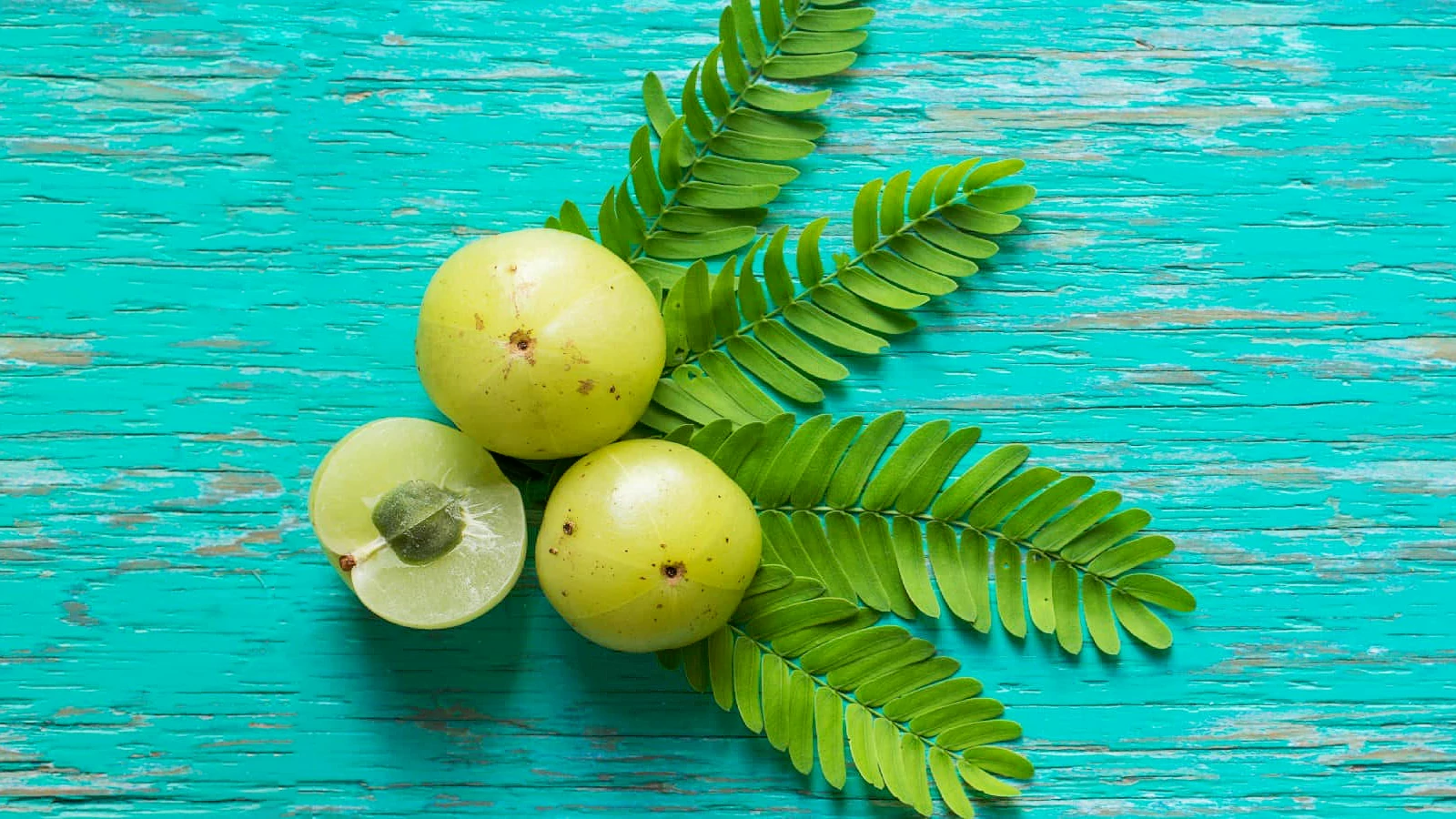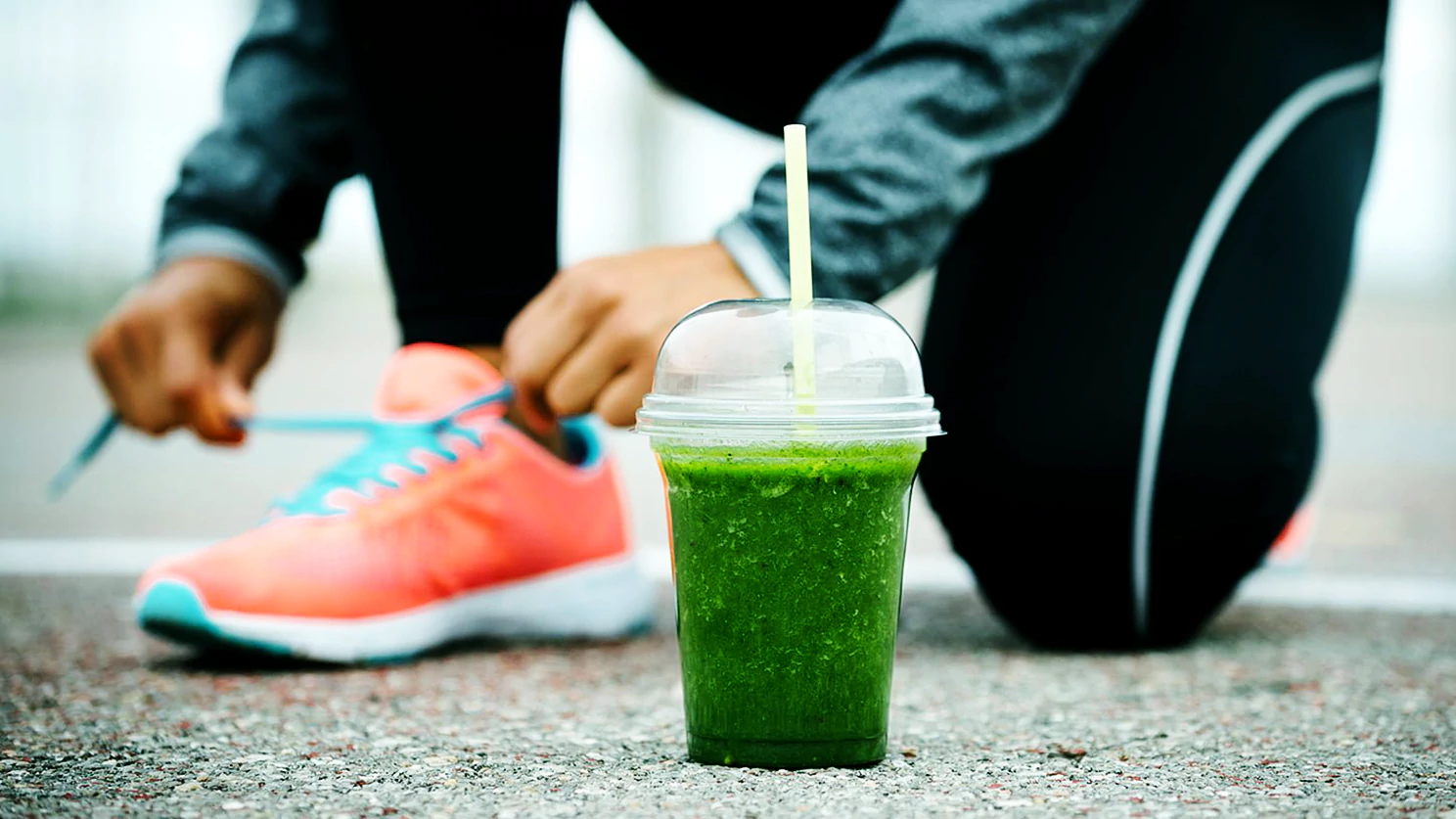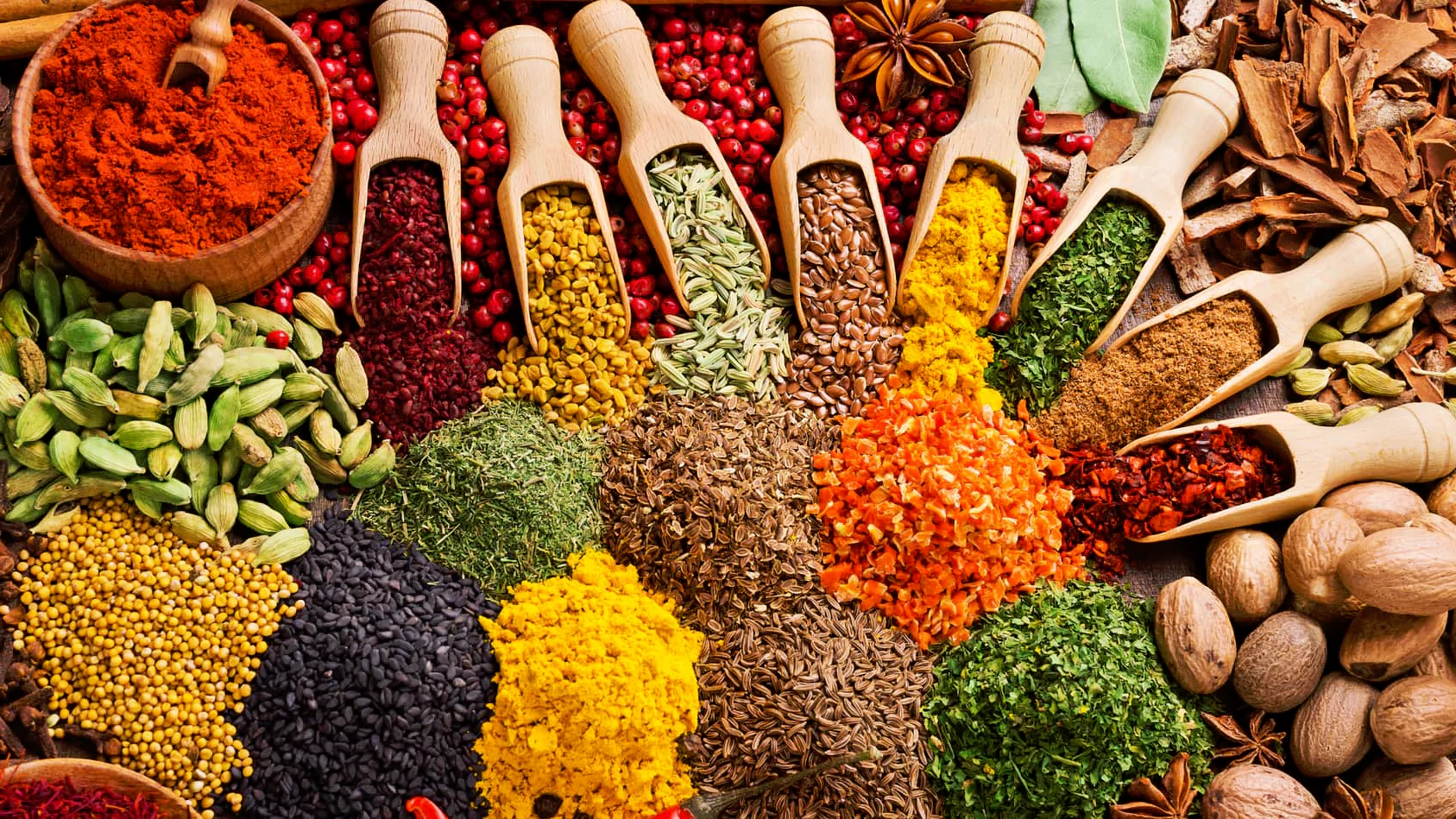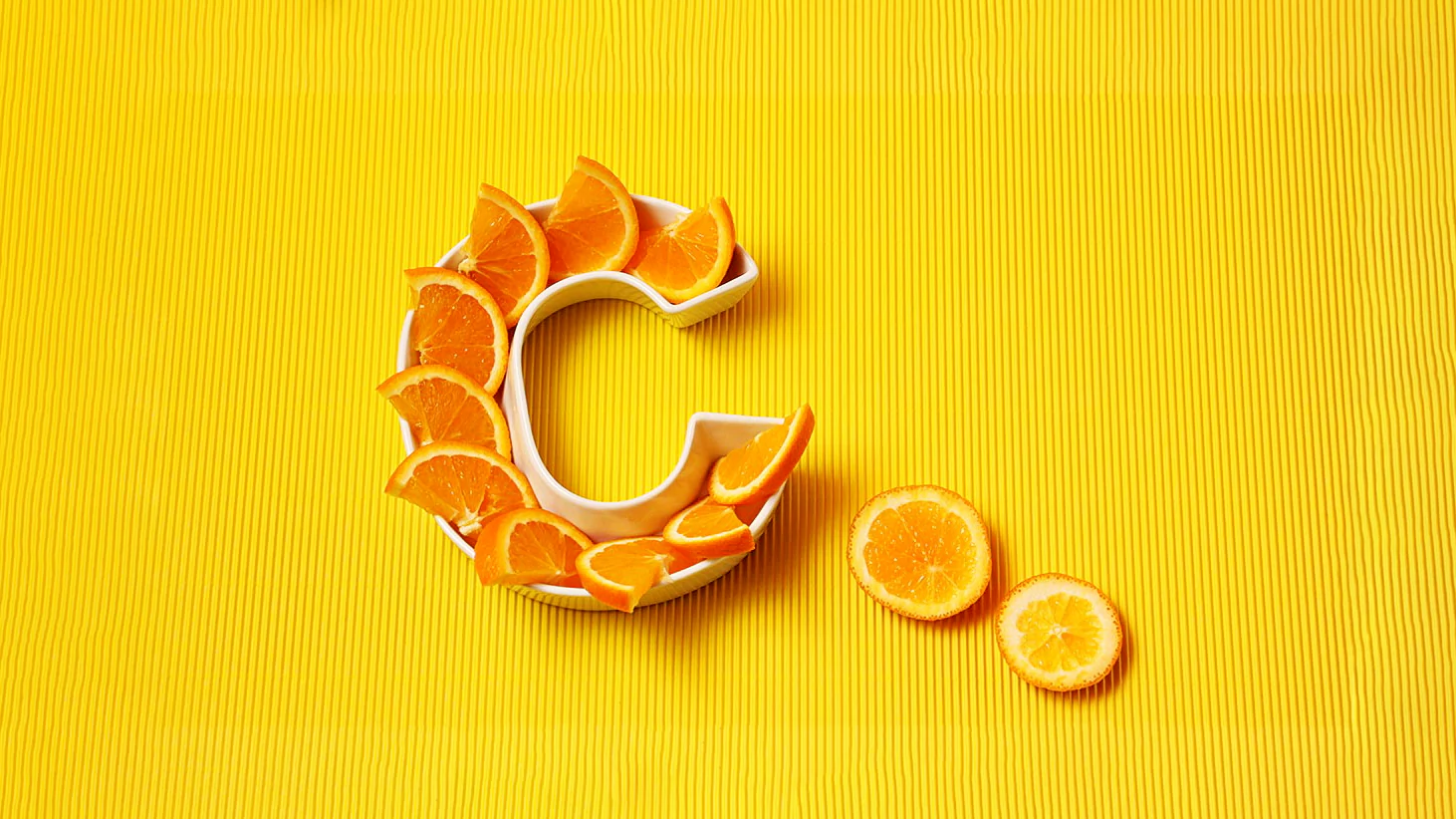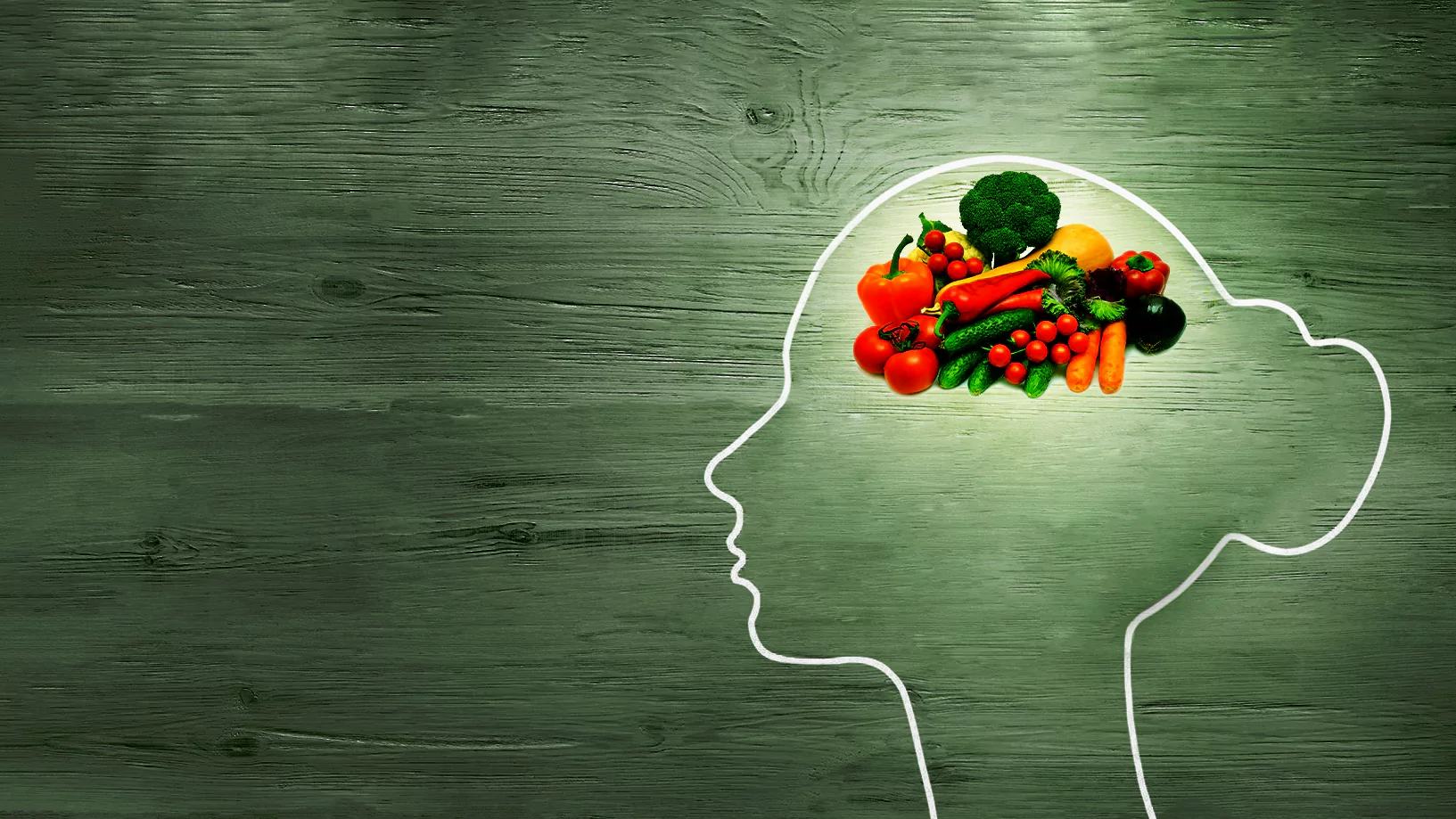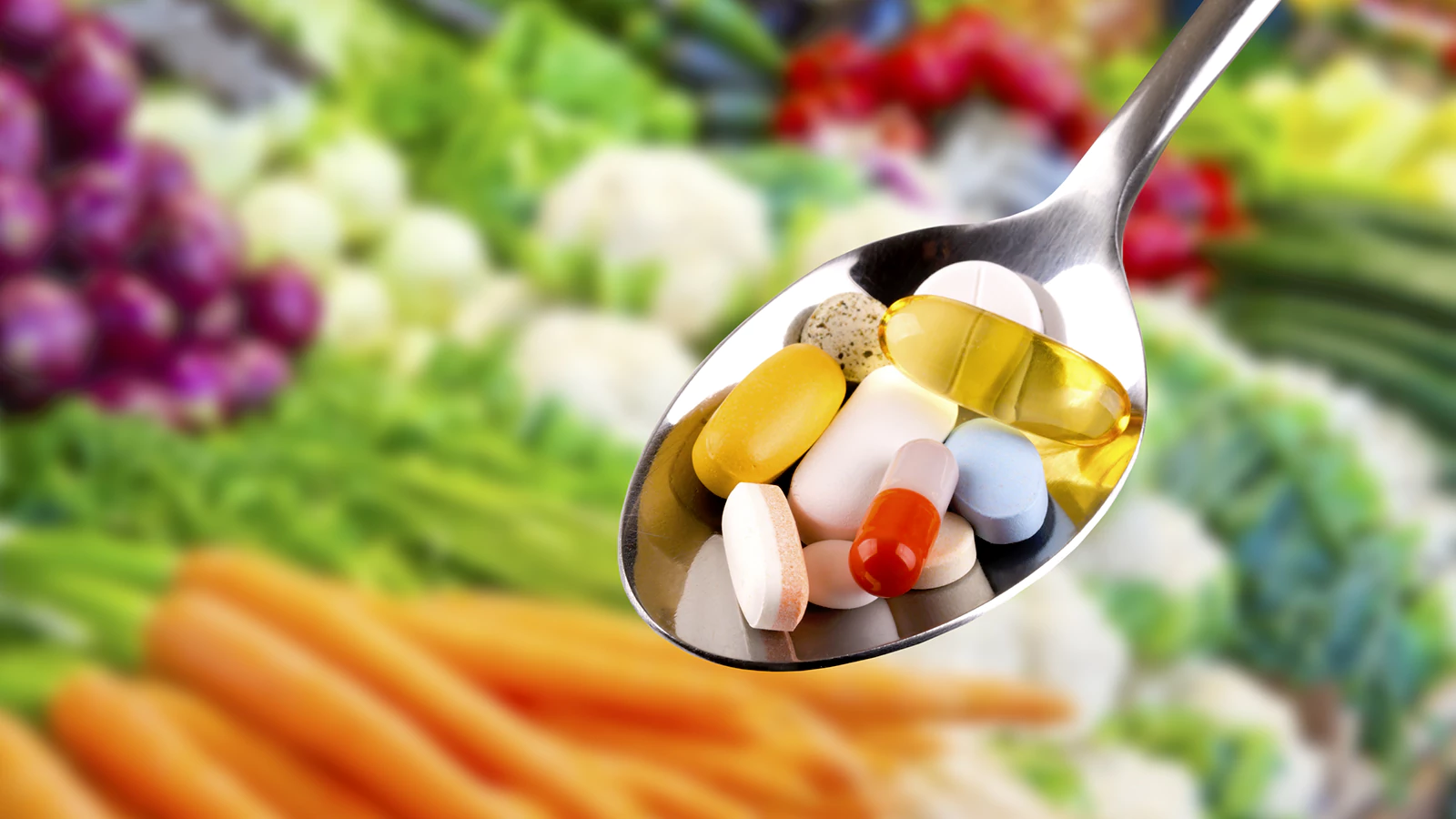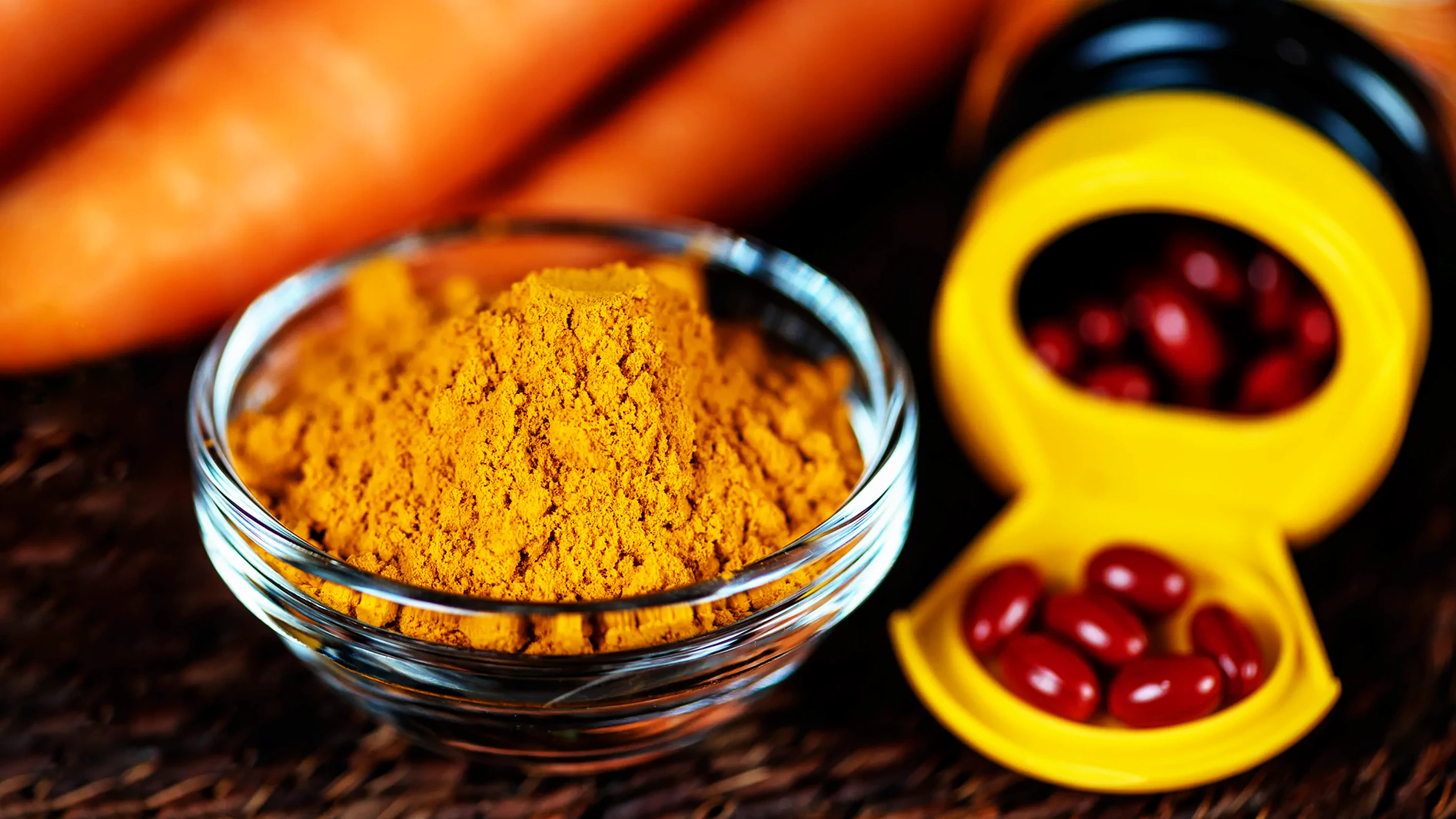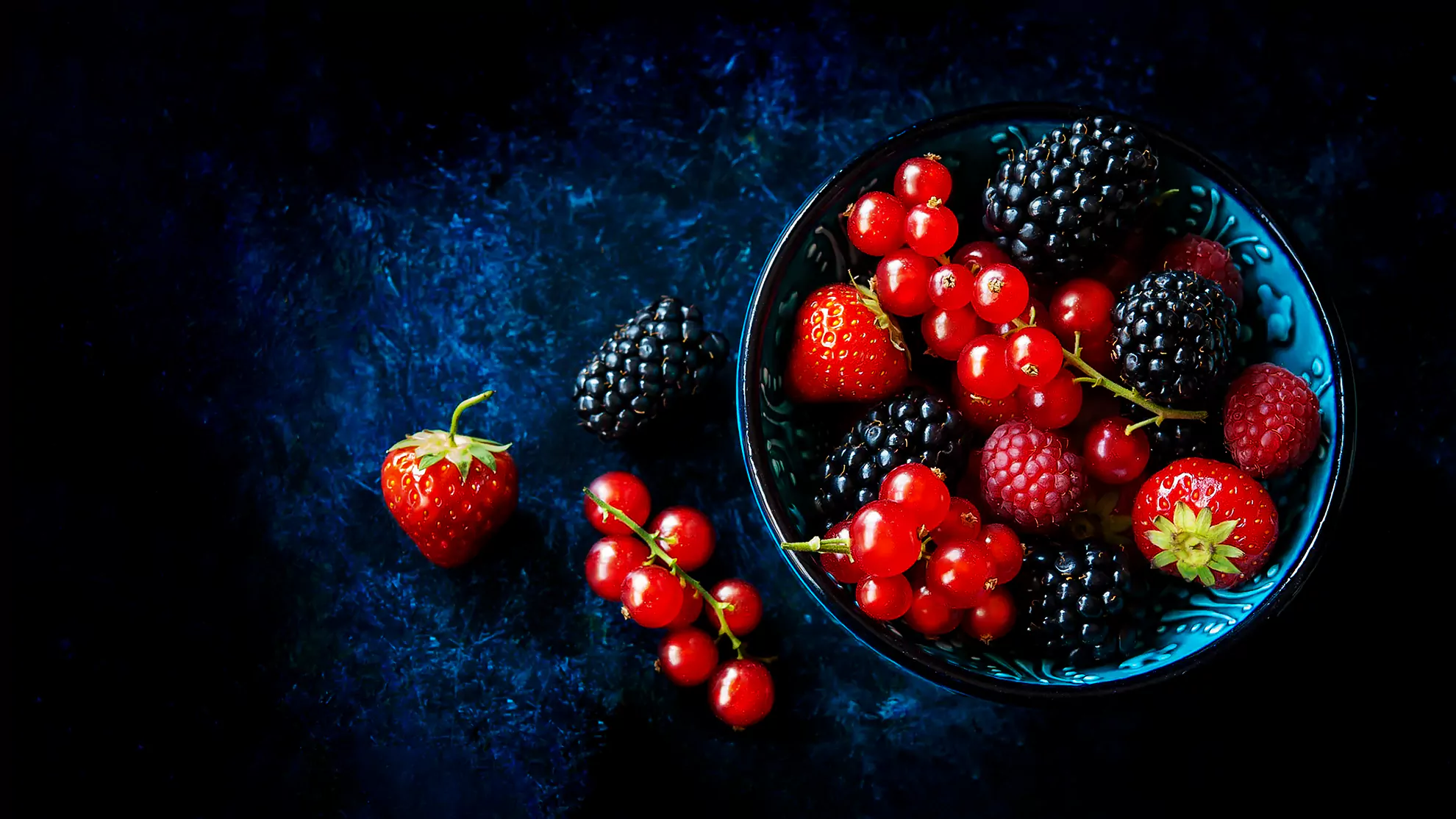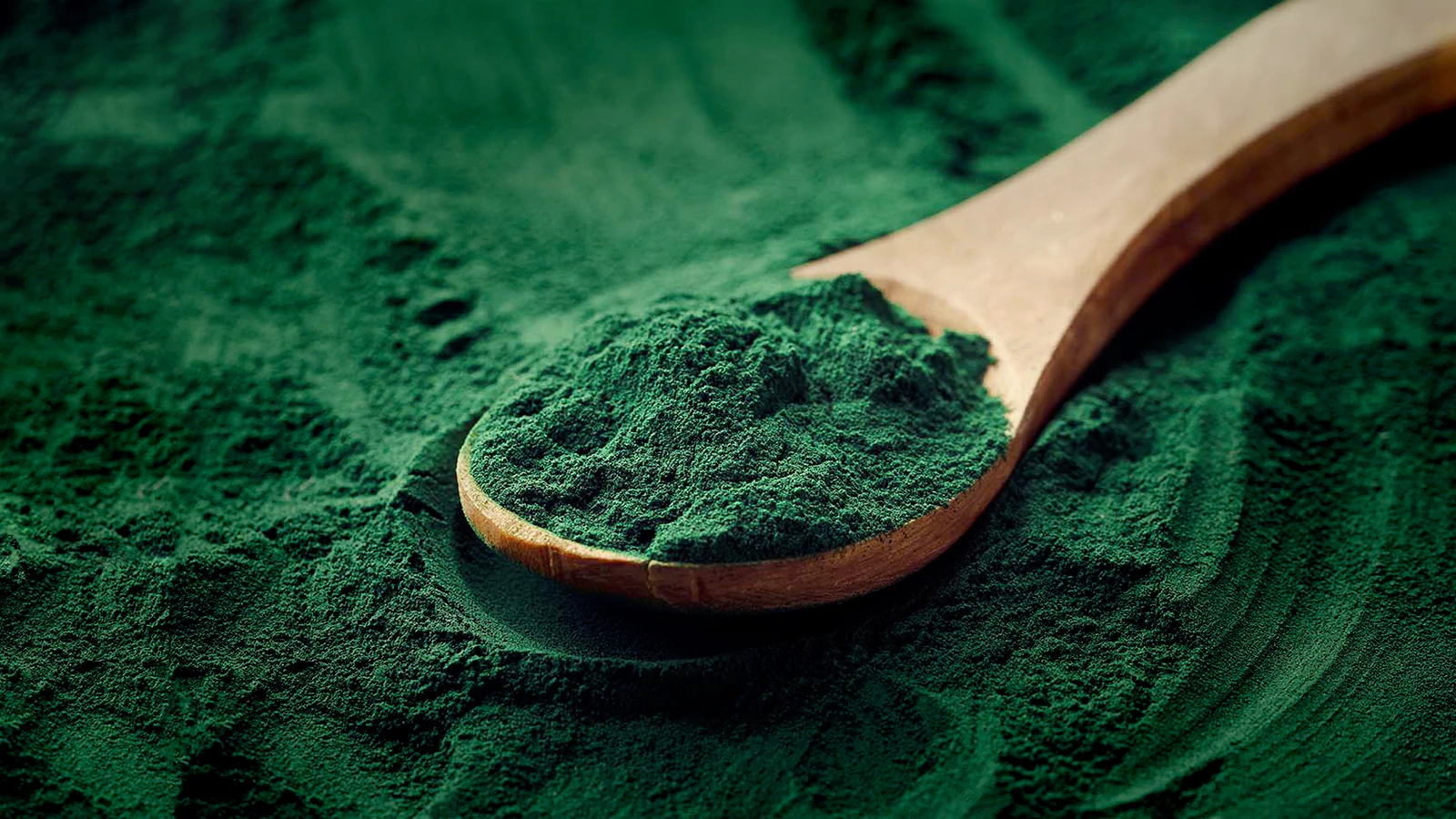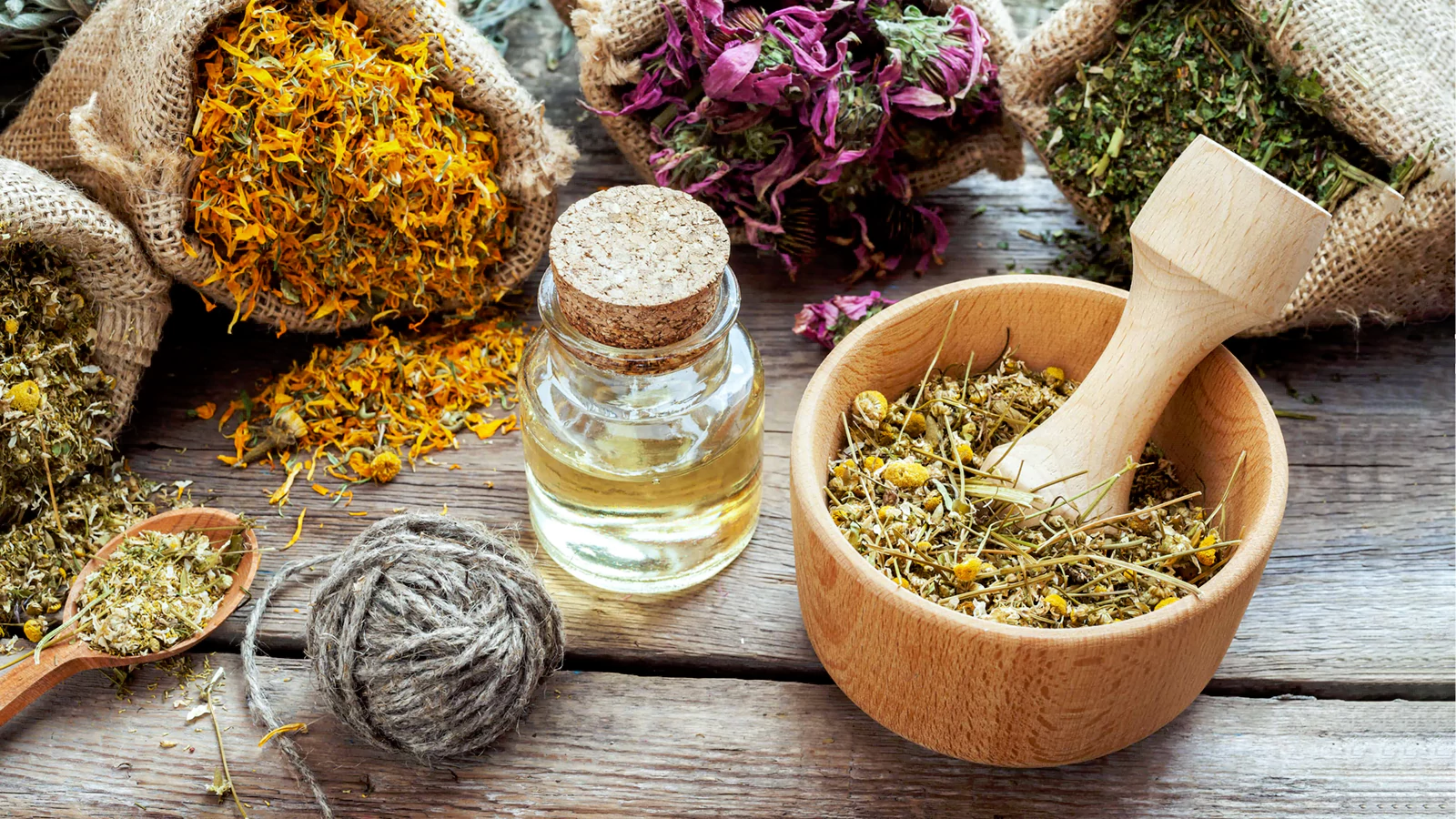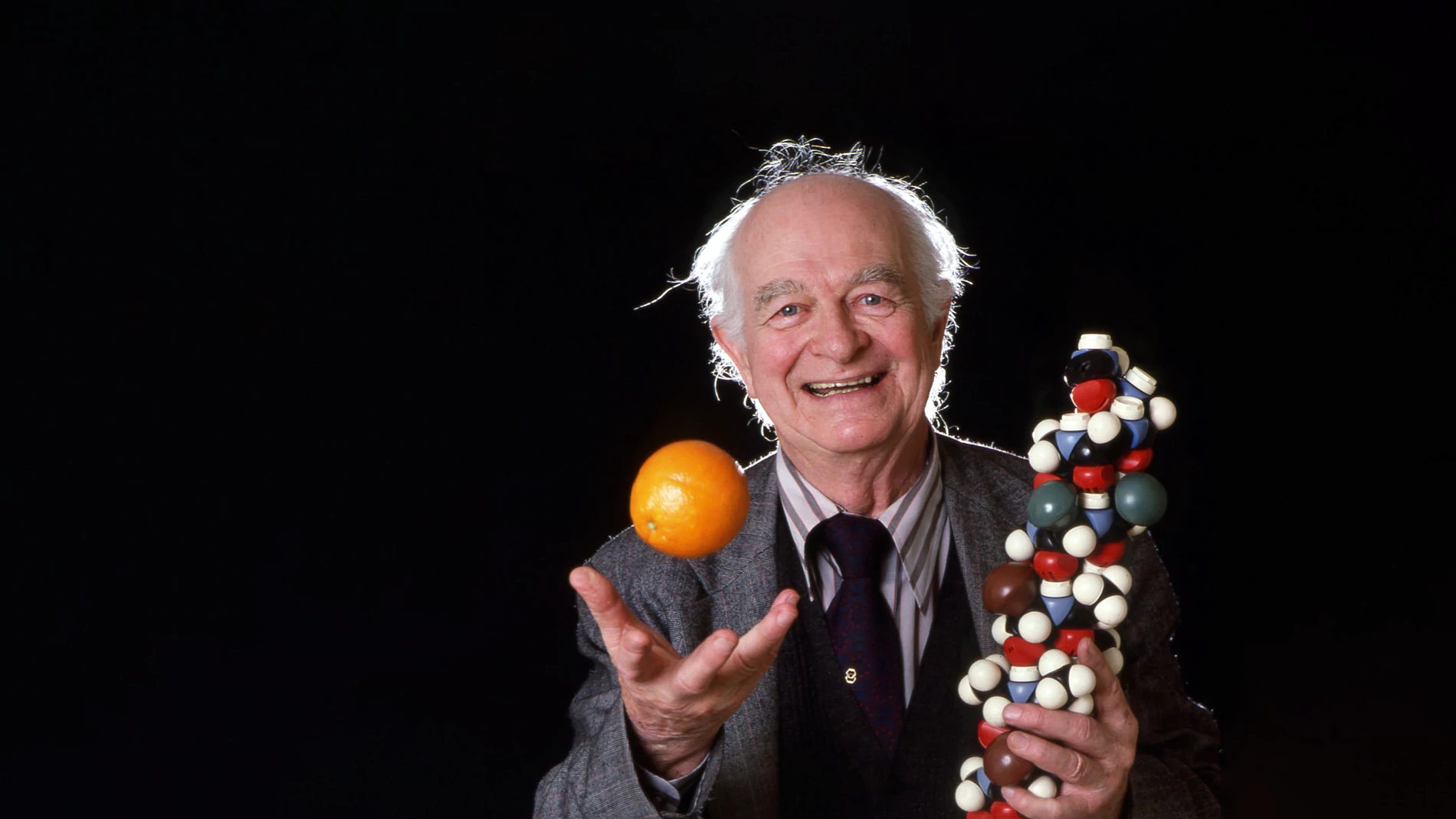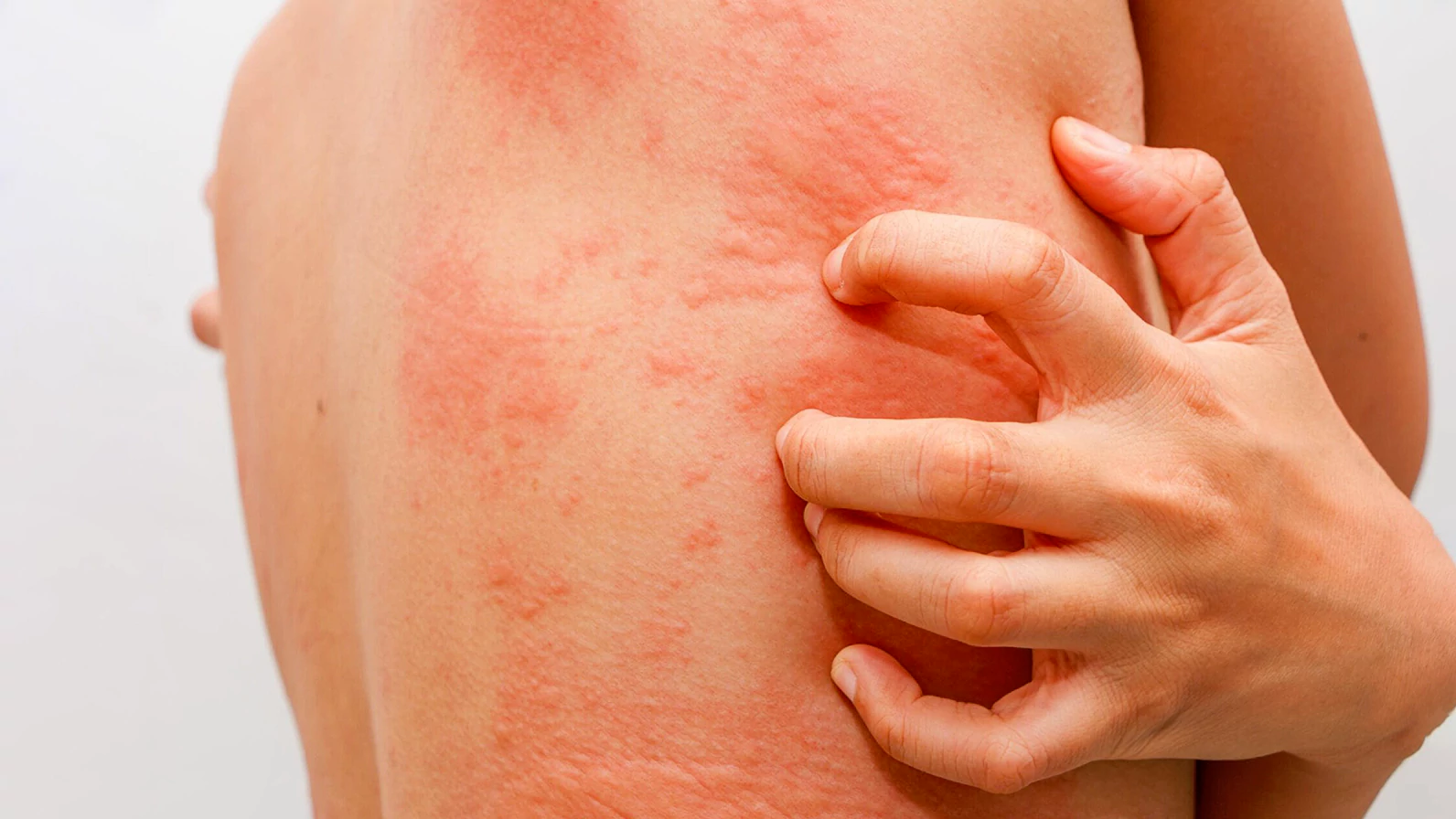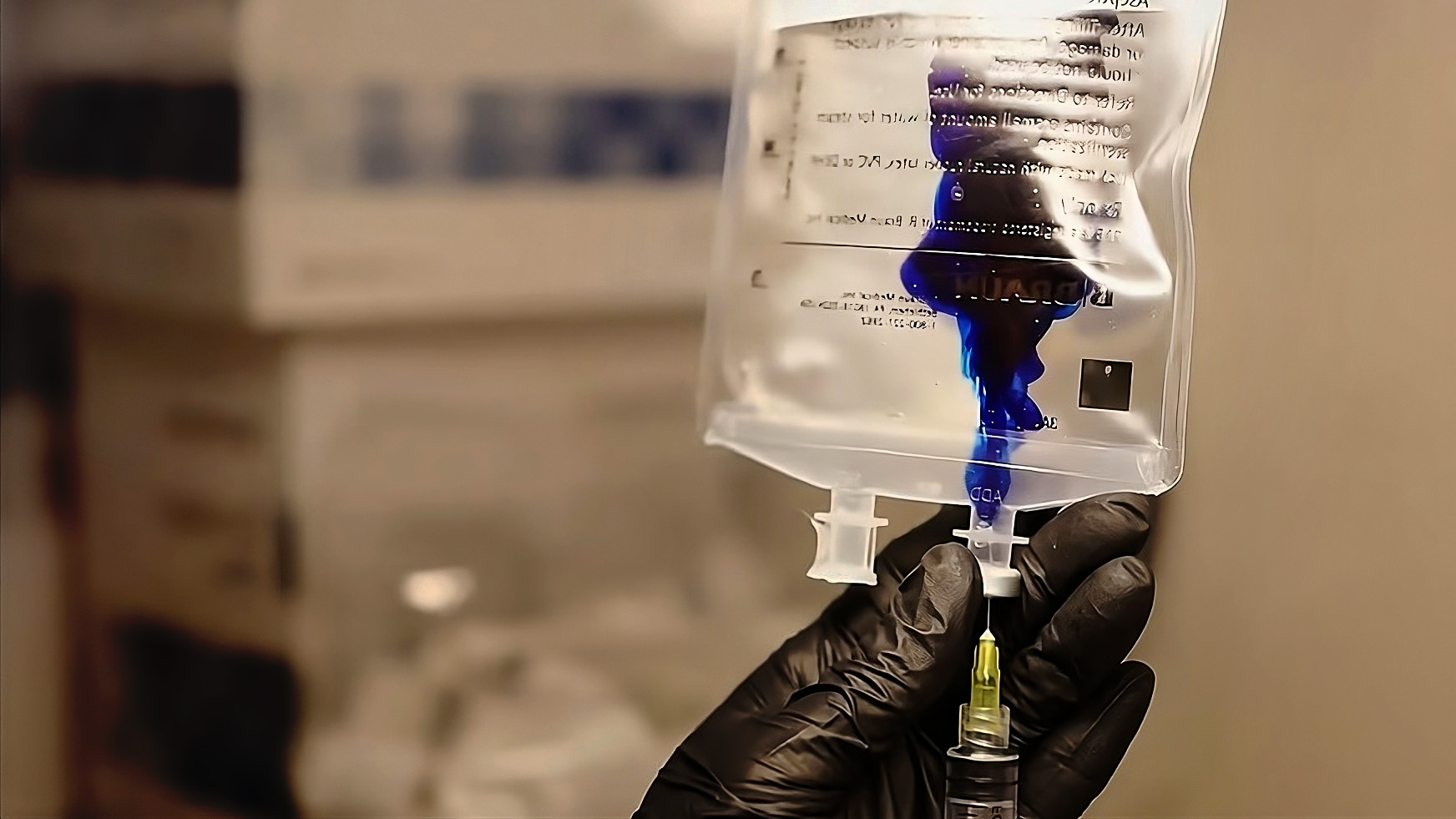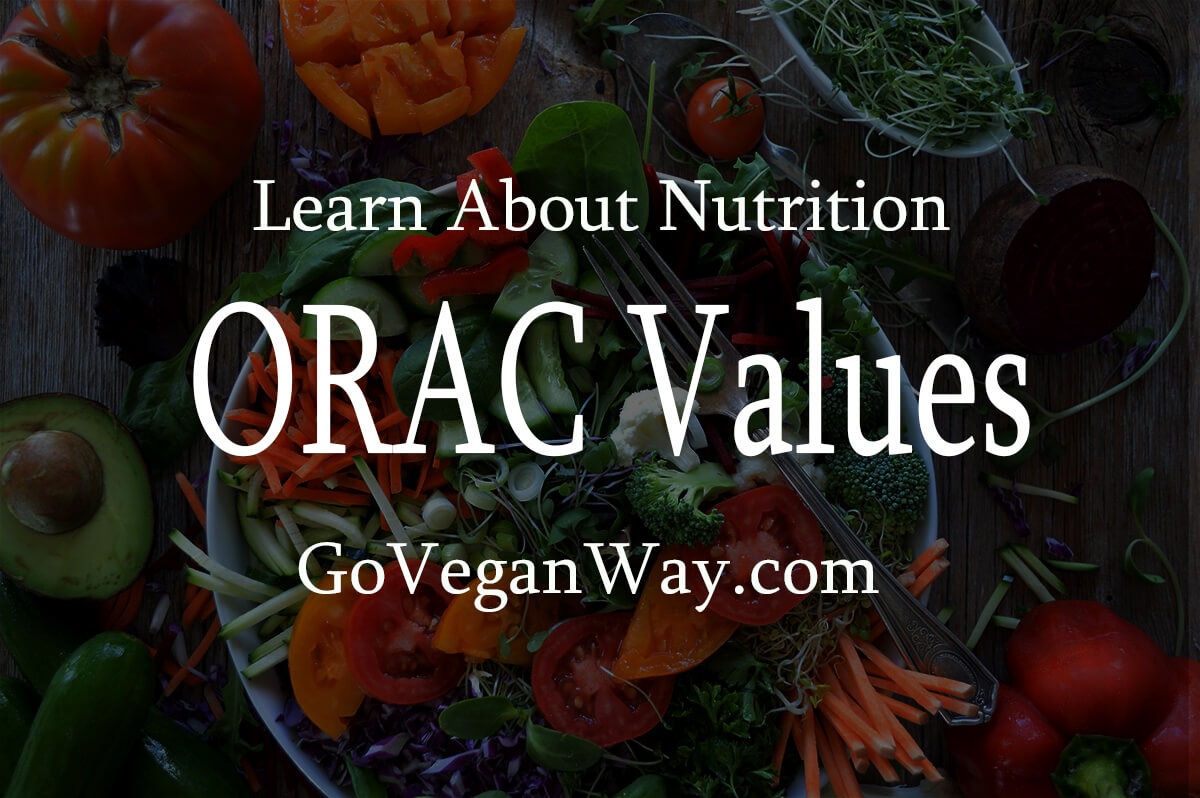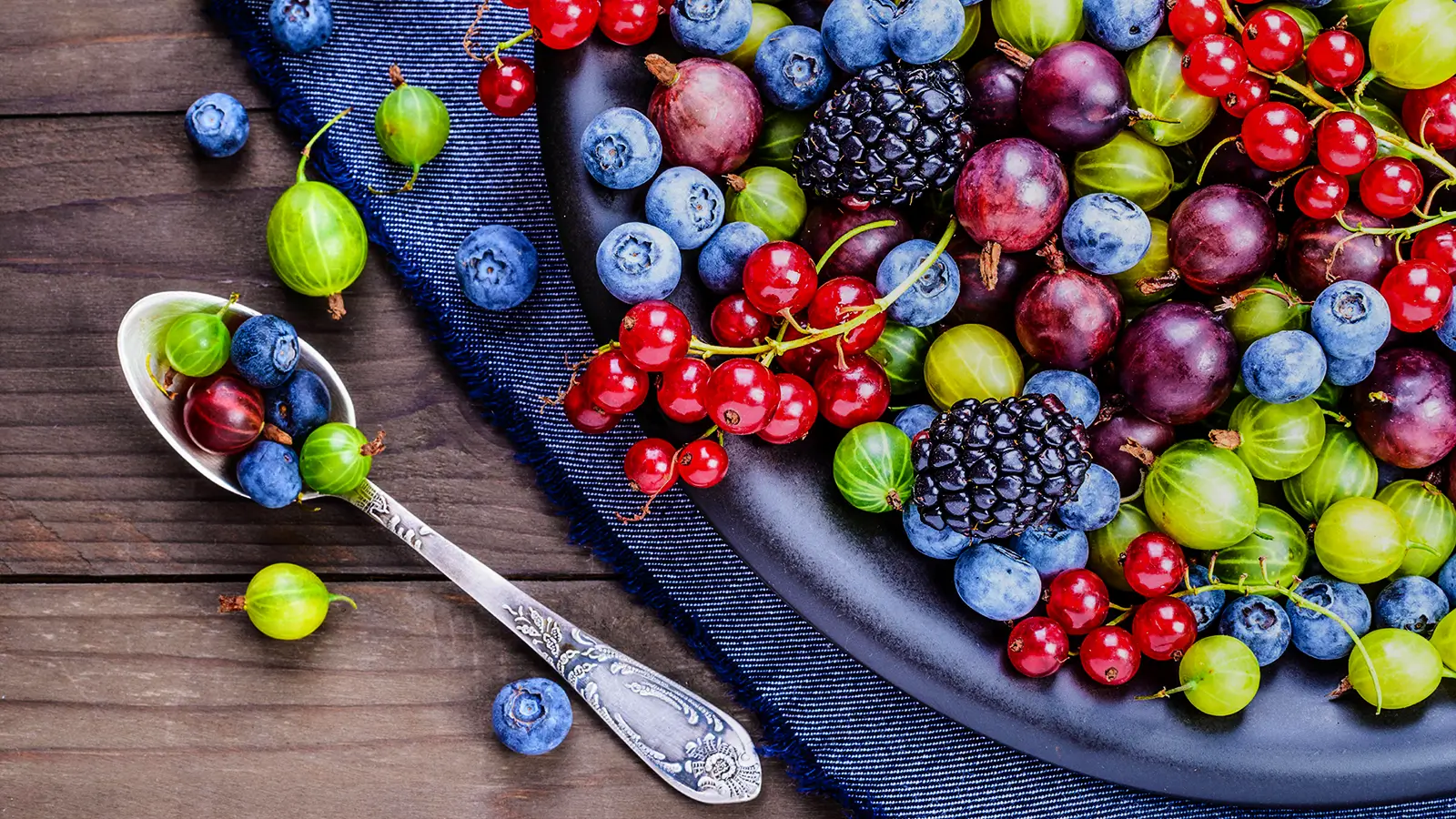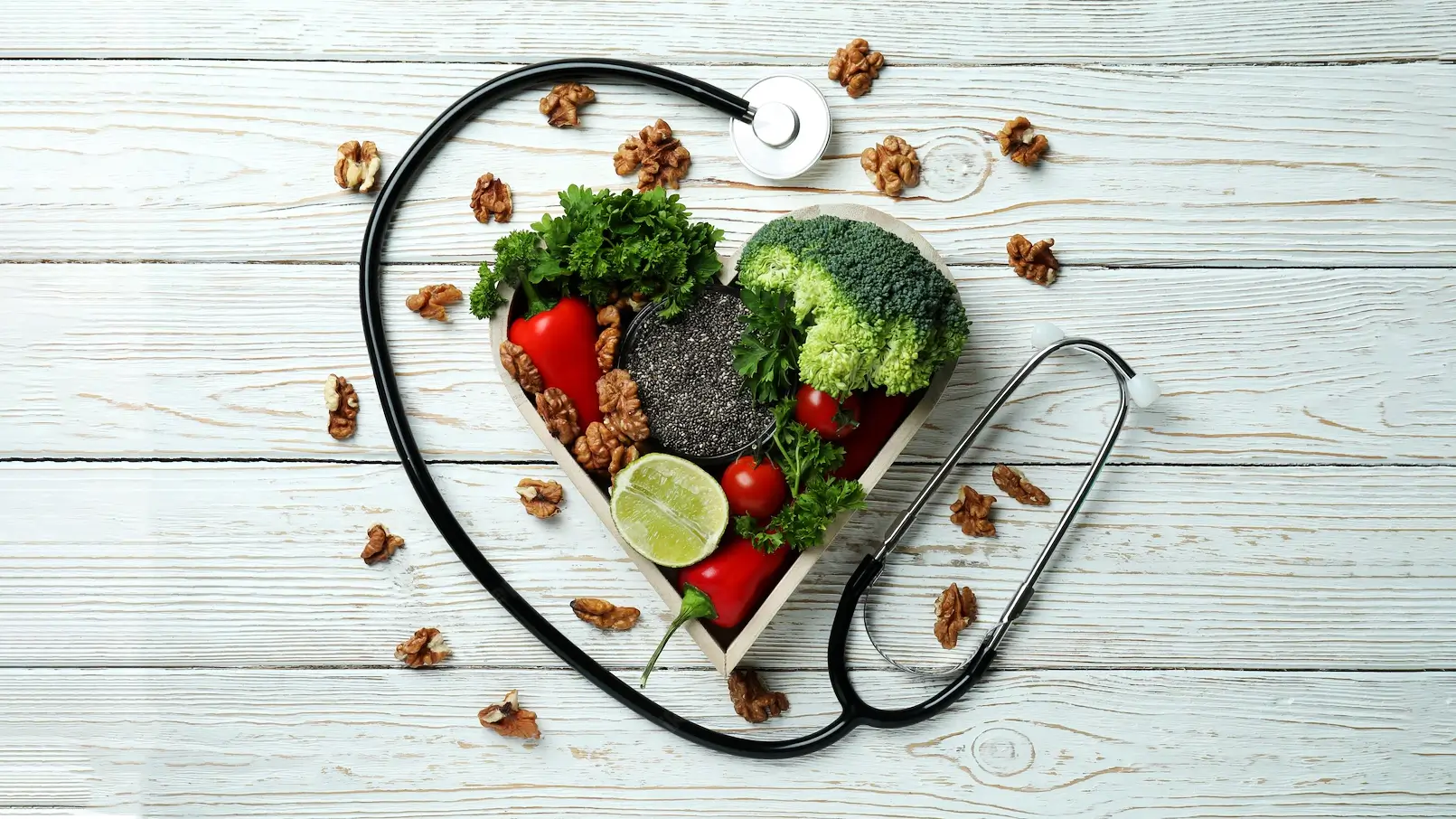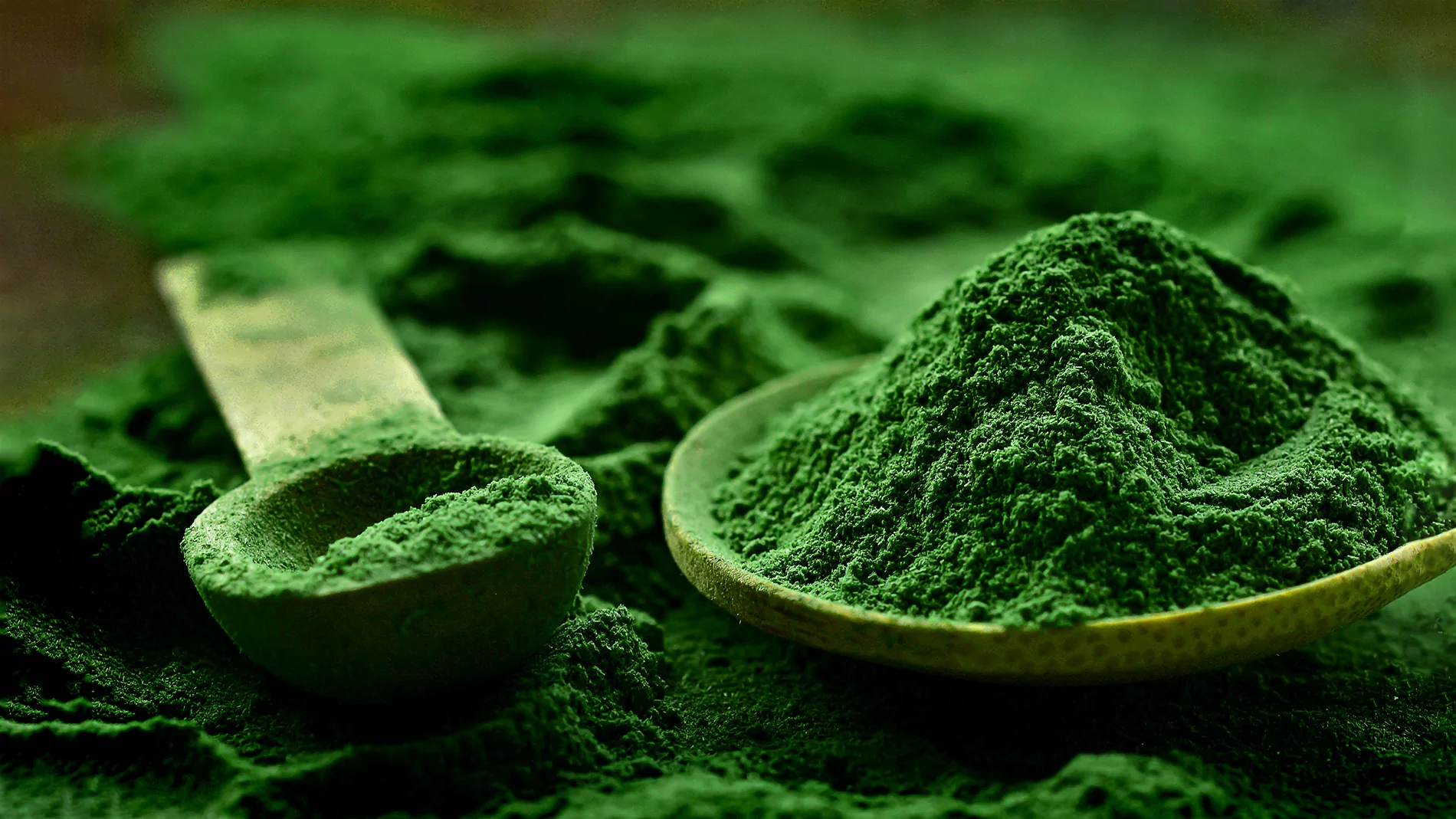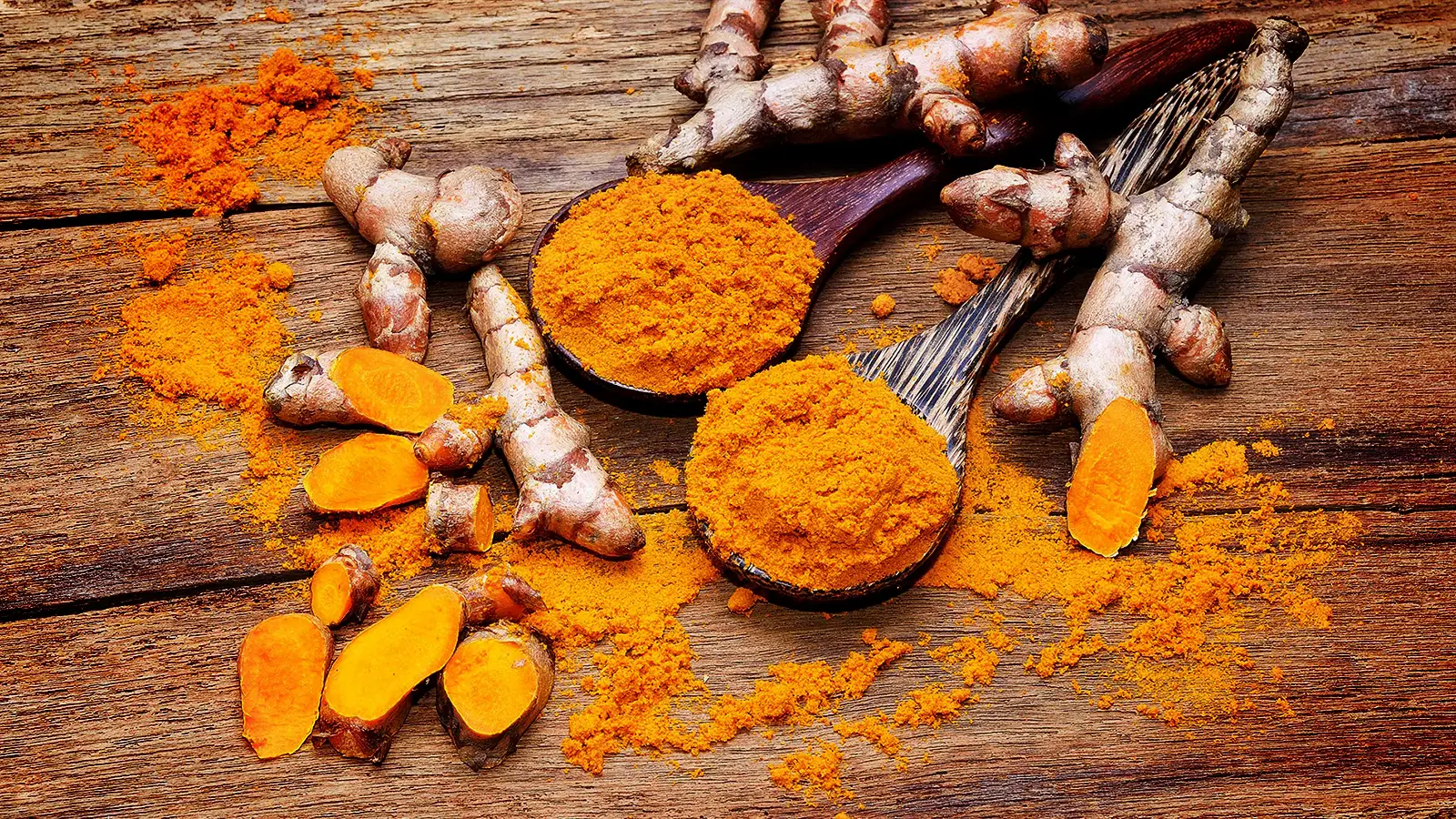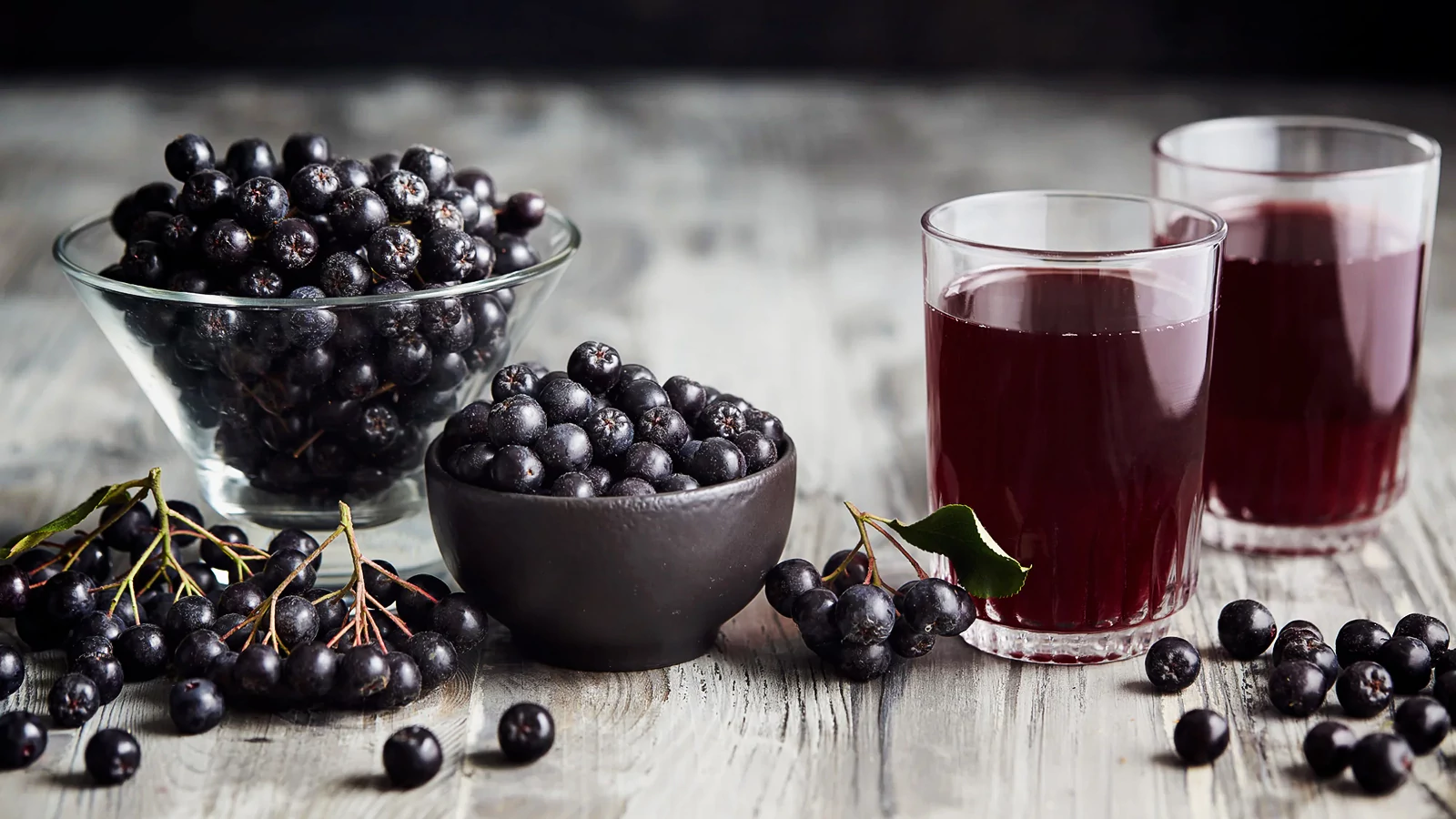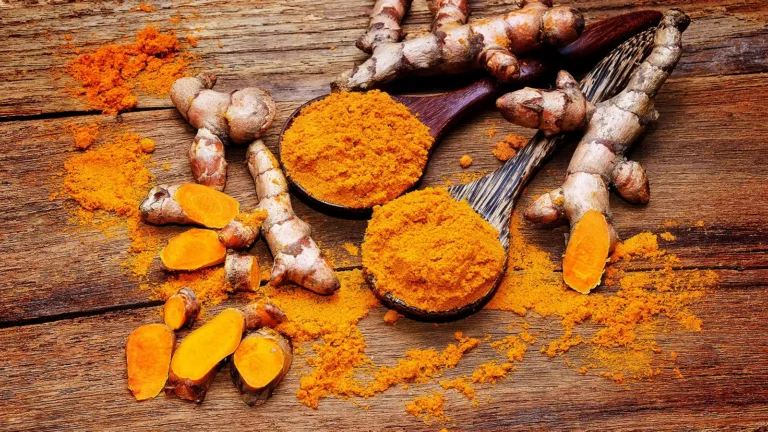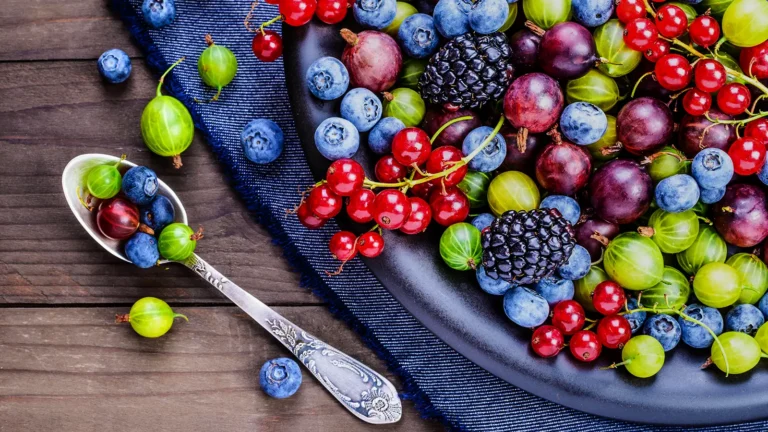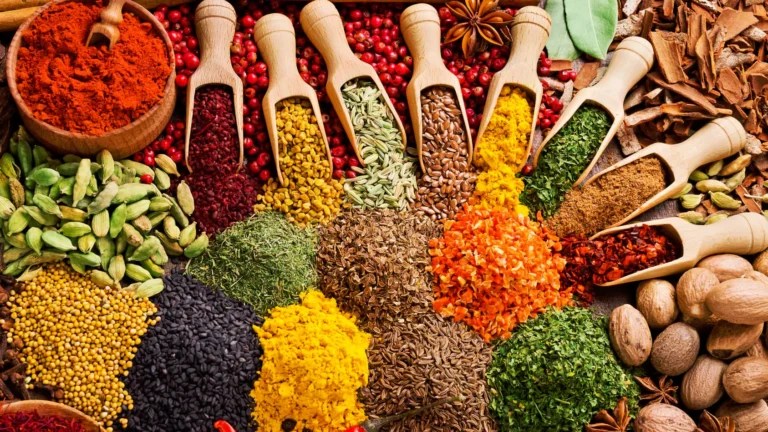Astaxanthin Benefits: World’s Most Powerful Natural Antioxidant
Astaxanthin is the most powerful natural and universal antioxidant (both oil and water-soluble) known to science with very unique properties.
Milos Pokimica
Written By: Milos Pokimica
Medically Reviewed by: Dr. Xiùying Wáng, M.D.
Updated January 7, 2024Key Takeaways:
– Astaxanthin, a red pigment found in microscopic algae, is the most powerful natural and health-promoting antioxidant known in science. It is 6000 times more potent than Vitamin C, 550 times more potent than Vitamin E, and much more potent than other pigments like curcumin and polyphenols (Nishida et al., 2007).
– Astaxanthin accumulates in tissues including the brain and eyes, it is one of the rare antioxidants that crosses the blood-brain barrier and accumulates in the brain. It also has anti-inflammatory, anti-apoptotic, and neurogenesis-promoting effects.
– Besides protecting the brain, skin, and eyes astaxanthin does everything other antioxidants do. It has cancer-fighting effects, protects against cardiovascular disease and stroke, boosts the immune system, helps with infertility and diabetes, and helps with wound healing and inflammation-related conditions such as arthritis.
– Astaxanthin also prolongs longevity by protecting DNA from damage and regulating autophagy.
– Astaxanthin is a universal antioxidant both oil and water soluble. Astaxanthin offers long-lasting protection against oxidation and toxins for both fat and water parts of the cell due to its unique oil-water-soluble properties, it is very unique for this characteristic. There are no other antioxidants that have this unique property (Higuera-Ciapara et al., 2006).
– Astaxanthin cannot be turned into a pro-oxidant. There is no risk of it turning into a free radical like many other antioxidants, so there is no risk of overdosing or creating unnatural balances inside of the body. It gives electrons and gets removed with no other oxidative reactions.
– Astaxanthin also activates the internal cellular antioxidant defense system through modulation of the Nrf2 pathway much better than any other antioxidant tested.
– Astaxanthin is beneficial for bodybuilding and athletes as it significantly increases physical strength and endurance while minimizing muscle recovery time.
– Astaxanthin increases collagen production and accumulates in the skin. It will help in reducing wrinkles, increasing elasticity, lightening skin, and removing hyperpigmentation.
Antioxidant potential of astaxanthin.
When we look at the antioxidant potential of different pigments the question arises, what is the most powerful and most health-promoting of them all?
We know that food synergy plays a role and that we should eat them all but also, we know that some plants are much better than others and that some pigments are much more potent than others. So, from yellow to orange to red, what is the strongest of them all? What is the healthiest plant?
The answer is red pigment astaxanthin in a special type of microscopic algae that we would never be able to consume in higher amounts in our normal diet.
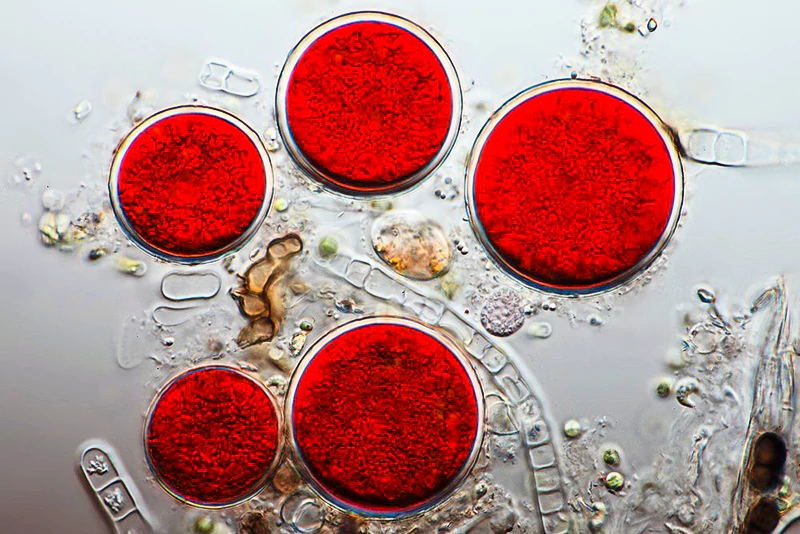
These types of algae have developed a defensive mechanism to combat UV radiation because they were exposed to sunlight during the entire day in areas where there is heavy UV radiation. The richest commercial source for natural astaxanthin is freshwater microscopic algae Haematococcus pluvialis. These microscopic algae Haematococcus pluvialis, when exposed to strong light or when any other environmental stressor is present like for example increase in salinity, will start to accumulate a bright red carotenoid pigment that is known as astaxanthin.

It is a very well-researched molecule. So far there are more than 3000 studies done on it both in vitro and in vivo. It is a carotenoid same as lycopene or beta carotene. The big difference is that it is the most powerful pigment known in science.
It is much more potent than curcumin for example. It is 6000 times more potent than vitamin C and 550 times more potent than vitamin E, 5000 times more powerful than green tea, 800 times that of coenzyme Q10, 200 times that of polyphenols, 150 times that of anthocyanins (water-soluble blue pigments in berries), and 75 times that of α-Lipoic acid (Nishida et al., 2007).
Summary:
Astaxanthin, a red pigment found in algae, reigns supreme as the most potent antioxidant known, outperforming vitamins C and E, green tea, and other antioxidants by significant multiples. It shines with 6000 times the potency of vitamin C and 5000 times that of green tea.
Astaxanthin properties.
Like other carotenoids, it is oil-soluble so which means it will accumulate in tissues.
In nature, it will accumulate in a food chain starting with animals that consume these types of algae. Red trout, salmon, red sea bream, flamingos, shrimps, krill, crab, and lobsters all are born white. Flamingos will become red from the effects of astaxanthin accumulation in their tissues. When shrimps and other crustaceans eat this type of algae, they will accumulate this pigment and their shells will become red. As the biomagnification process happens in the food chain, the level of astaxanthin and color becomes more concentrated as it moves up creating the beautiful reds and pinks we see in fish such as salmon and marine birds like flamingos. That nice red meat of salmon is nothing more than astaxanthin accumulation. In wild salmon, the amount of accumulated astaxanthin is in the range of 20 to 40 mg/kg of body weight.
Another unique characteristic is that it can pass the blood-brain barrier and also the retina and will accumulate in the brain and the eyes. When examined the xanthophylls (yellow pigments, one of two major divisions of the carotenoid group which includes astaxanthin, lutein, and others) accounted for 66-77% of total carotenoids in all brain regions examined (Craft et al., 2004).
What this also means is that once assimilated it will remain in the cells offering long-lasting protection. Water-soluble antioxidants could not do that because they do not have the means to remain in the body. The problem is that our body is not just water or fat. It is both so to provide overall protection we need both of them. Ideally, we would consume water-soluble antioxidants in every meal during our evolution from whole plant foods so that was not an issue in the past. Today we eat animal products, oil, and refined sugar. What we need today is an oil-soluble antioxidant that can accumulate in the cells but will also protect other parts of our cells that are not made out of fat. And that is exactly what this pigment can do.
It is unique in that matter that is both oil and water-soluble.
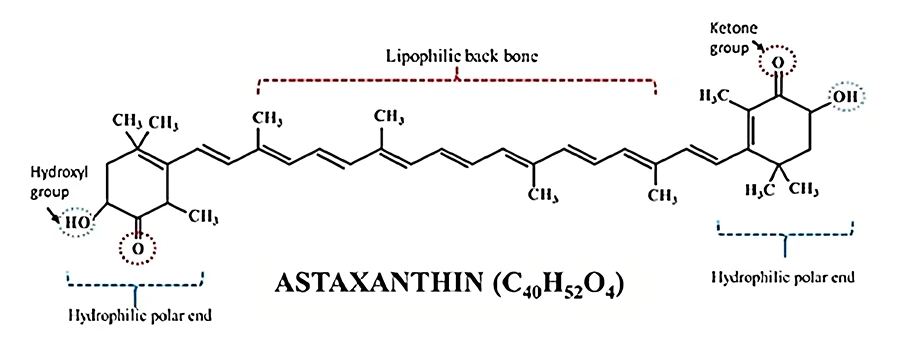
This is not 100 percent correct but it is sort of true. It is an oil-soluble antioxidant but it is a very long molecule that when integrated into a cell membrane the end of that molecule will stick out of the cell membrane into the watery parts of the cells. So, although it is oil soluble the shape of the molecule will allow for it to protect both parts of the cells in fats and water. And will go through the entire body including the brain. The molecular structure also enables it to quench free radicals at the polar end groups, while the double bonds of its middle segment remove high-energy electrons. These unique chemical properties explain some of its features, particularly a higher antioxidant activity than other carotenoids (Higuera-Ciapara et al., 2006).
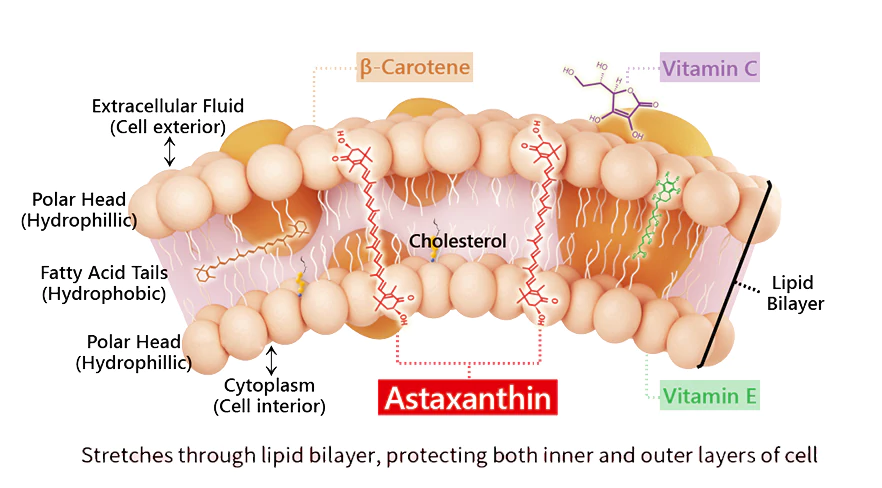
Summary:
Astaxanthin stands out as a potent antioxidant with unique properties: both water and oil-soluble for long-lasting protection in tissues, and able to cross the blood-brain barrier for brain and eye health. While not purely water-soluble, its special shape allows it to shield both fatty and watery parts of cells, making it a versatile defender against free radical damage.
In addition, astaxanthin protects the redox state and functional integrity of mitochondria.
It is extremely strong, it is a universal antioxidant (both oil and water-soluble), it passes through the blood-brain barrier, and one more thing the most important of them all.
It can never turn itself into a pro-oxidant.
After it gives all of its electrons it does no damage to DNA. Astaxanthin cannot become pro-oxidant, it just gives electrons and leaves so there is no danger in taking it. It is a molecule that is almost perfect in its design. It offers complete and lasting protection against oxidation and toxins. Everything that other pigments do like curcumin, astaxanthin will do as well and is much stronger.
Besides this, there is one more benefit. There are three main enzymes that our body produces to fight free radicals. These are superoxide dismutase, catalase, and glutathione peroxidase. In studies, both three were significantly upregulated in irradiated cells in the presence of astaxanthin (Xue et al., 2017). Therefore, it exerts significant antioxidant activities not only via direct radical scavenging but also by upregulating our body defenses. It activates the cellular antioxidant defense system through modulation of the Nrf2 pathway. Nrf2 is a protein that regulates the expression of antioxidant proteins that is triggered by injury and inflammation. Several synthetic drugs that stimulate the Nrf2 pathway are currently being tested for the treatment of diseases that are caused by oxidative stress. Astaxanthin does this much more than any other antioxidant tested so far. Curcumin has the potential to stimulate only catalase. Astaxanthin is even more potent in this regard than curcumin.
Also, so far there are no serious negative side effects associated with it that were ever reported.
Summary:
Astaxanthin is a powerful antioxidant with unique benefits:
Super protection: Shields cells from damage by free radicals and toxins, even surpassing other antioxidants like curcumin.
Safe and lasting: Doesn’t cause harm to DNA, unlike some antioxidants, and its effects are long-lasting.
Boosts natural defenses: Enhances your body’s own antioxidant production system, offering more than just direct scavenging.
No harm, all benefits: No serious side effects were reported, making it a safe and potentially impactful choice.
Androgenicity.
The only one I can think of would be its potential to neutralize the enzyme 5-alpha-reductase (5αR) in the body to some extent (Angwafor et al., 2008). That is the enzyme that turns testosterone into DHT (dihydrotestosterone). DHT (dihydrotestosterone) is a hormone that is derived from testosterone, the male sex hormone. DHT plays a role in the development of male characteristics, such as facial and body hair, muscle mass, and voice, and affects libido. In later years of men’s life after puberty, it affects hair loss and prostate enlargement.
Astaxanthin can lower the androgenicity in the human body by lowering DHT levels and increasing testosterone levels meaning it can protect the prostate, increase lean muscle mass and slow down balding in men but as a side effect, it could potentially lower the libido.
DHT is five times more androgenic than its parent hormone testosterone with zero anabolic effects. Skeletal muscles have an enzyme that neutralizes DHT so it does not have any anabolic effect. DHT is purely just an androgenic hormone and is created from testosterone.
This study (Anderson et al., 2005) found that a dietary supplement containing astaxanthin and saw palmetto extract significantly reduced serum DHT levels by 32% after two weeks of intake. The authors suggested that this effect was due to the inhibition of 5αR by both astaxanthin and saw palmetto extract.
Boosting testosterone levels by blocking 5-alpha-reductase (5αR) can help with muscle mass preservation in elderly people. This also helps in cases of prostate enlargement and prostate cancer.
Summary:
Astaxanthin has the ability to possibly lower androgenicity in the body by lowering DHT, a hormone that causes hair loss and prostate problems in men. However, it may also decrease sexual desire as a side effect.
Bodybuilding and endurance.
It is a good supplement for bodybuilding and athletes in general. And it is not on a doping substance ban list. It increases physical strength and endurance significantly and minimizes muscle recovery time following exertion (Brown et al., 2017). The only reason why it is not banned in professional sports is that it is a naturally occurring dietary carotenoid and there is no possible way for the industry to ban athletes from regular eating. When we exercise there is inflammation in the muscles due to the overproduction of free radicals due to the high rate of oxygen consumption. Heavy breathing exists due to the increase in demand for energy. Because of this, protein, lipid, and nucleic molecules can become damaged due to an overproduction of reactive oxygen and nitrogen species. To prevent this supplementing with strong antioxidants like astaxanthin has become a strategy for many professional athletes and active health-conscious individuals.
There was a study that investigated the testosterone-boosting supplement that contained astaxanthin and saw palmetto berry extract. A study examined the effect of astaxanthin on levels of dihydrotestosterone (DHT), testosterone, and estradiol (Angwafor et al., 2008). These three hormones can have a role in the development of an enlarged prostate and prostate cancer as well as andropause (male menopause). Investigators gave a supplement that contained astaxanthin and saw palmetto berry extract for 14 days. The analysis showed a significant increase in testosterone and a significant decrease in DHT and also a significant decline in estradiol as well. Because testosterone is a base hormone that enzymes in the body convert to DHT and estrogen usually if you block conversion to DHT you can expect a rise of estradiol. Because of xenoestrogens and high dairy consumption levels of estrogen are elevated in most of the population.
Astaxanthin lowers DHT and lowers estrogen and boosts testosterone.
All of the improvements in hormone levels seen in this study bode well for men and prostate health and also male pattern baldness and exercise and bodybuilding and even other androgenic problems like acne vulgaris. But it can also potentially lower the libido. There are no reports found on this so this is just anecdotal right now. If you already taking some of the enzyme 5-alpha-reductase blockers like finasteride for hair loss or dutasteride for prostate enlargement you can still add astaxanthin to your list of supplements but keep taking your medication as well. So far there are no real clinical studies for hair loss prevention using this pigment so I don’t know how potent it is regarding this issue.
Summary:
Astaxanthin can boost muscle strength and endurance, potentially improve testosterone levels and lower DHT, offering promising benefits for athletes, men’s health, and exercise performance. However, more research is needed on its effectiveness for hair loss prevention.
UVA protection, skin diseases, and collagen production.
It all started when some researchers got the idea that they can use astaxanthin in a sunscreen lotion as a topical product. The reasoning was if it is a strong pigment and it absorbs UV radiation and protects algae from the Sun then it will do the same thing for our skin if applied topically. They got much more than they hoped for. This pigment offered photoprotective, antioxidant, and anti-inflammatory effects providing it to be much more beneficial. Free radical damage is what in reality destroys our skin and leads to skin aging. The mechanisms of both internal and external (photo-) aging include the generation of reactive oxygen species via oxidative metabolism and exposure to Sun ultraviolet light. The process of skin aging in the first step involves damage to DNA caused by free radicals, then comes the inflammatory response and the generation of matrix metalloproteinases that degrade collagen and elastin in the dermal skin layer (Kammeyer et al., 2015).
It has been shown that astaxanthin in the skin will act on several different pathways of the oxidative stress cascade (Komatsu et al., 2017). Besides UVA protection its protective role will slow down the DNA damage to the skin and increase collagen production and will contribute to skin rejuvenation and appearance and in skin diseases. It was shown that it will help in a wide range of skin conditions where inflammation plays a role such as psoriasis and atopic dermatitis and will also help with excessive dryness and pruritus.
Like glutathione, it will lighten the skin and the eyes and will help with hyperpigmentation suppression, melanin synthesis, and photo-aging inhibition. It will increase the rate of healing of injuries, skin irritation, and tumor incidence (Rao et al., 2013).
And for cosmetic purposes besides the already mentioned effects, it was shown that it will reduce wrinkle formation almost at the level of retinol creams (Tominaga et al., 2012).
In this study, they gave 6mg of astaxanthin as an oral supplementation plus a topical cream, and at the 8-week mark, the subjects showed significant improvements in skin condition in all layers, corneocyte layer, epidermis, basal layer, and dermis.
This is a clinical trial, not just some “alternative medicine“. For skin so far this is maybe the best thing that nature has to offer. It lightens the skin and removes hyperpigmentation, will protect the skin from UV radiation and free radical damage, will reduce wrinkles and increase elasticity, and will give you a “golden glow“ like beta carotene. In some anecdotal reports, people on high dosages of astaxanthin were very resilient to sunburn so much so that in some cases they will just stop using sunscreen. Sunscreen products just by themselves are very toxic but in most cases are necessary even with astaxanthin supplementation.
It is not just astaxanthin that does this, there are many other dietary antioxidant sources including polyphenols and carotenoids but astaxanthin has some unique properties and is the strongest of them all. Comparative studies examining the photoprotective effects of carotenoids have demonstrated that astaxanthin is a superior antioxidant, having greater antioxidant capacity than canthaxanthin and β-carotene in human dermal fibroblasts. That is the reason why there is so much research into it.
People especially ladies always ask me what regimen I recommend for skin rejuvenation.
It starts with a healthy diet and lifestyle but on top of that astaxanthin supplementation with micro-needling and with retinol cream can improve a skin condition visibly. The skin has an unlimited amount of stem cells so you can do a micro-needling with no problems also retinol will increase cell turnover and astaxanthin will protect the skin and will increase collagen production. The only side effect that is possible if you overdo it because it accumulates in the skin is that you might go past the “golden glow“ into carotenemia. So far there is no actual case reported of astaxanthin-induced carotenemia except some anecdotal reports of skin turning pink in between the fingers and palms. You will have to take substantial amounts of this pigment to stain your skin in a more visible manner but theoretically, it is possible. It does accumulate and it does have a strong red color.
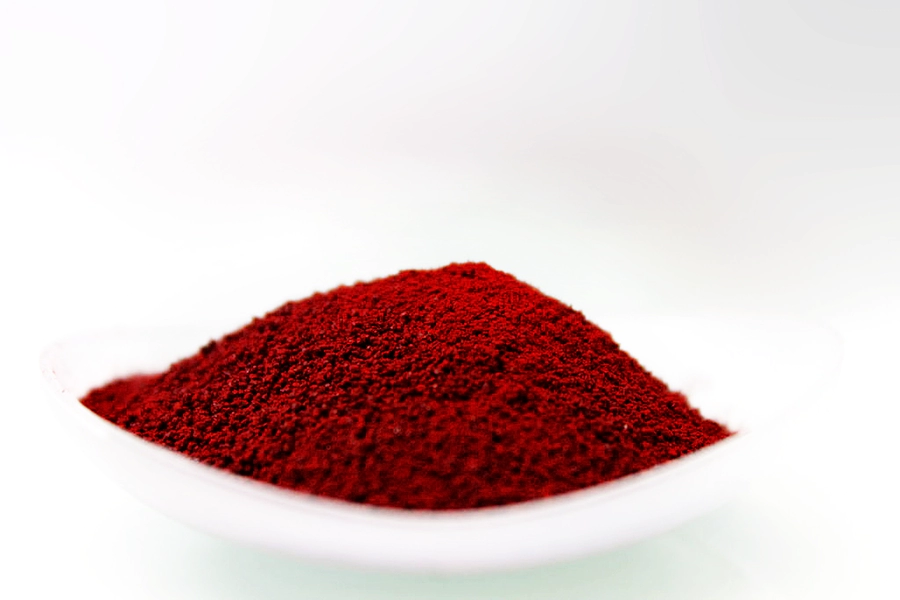
This is a reason why it failed as a sunscreen product. Not in research, it has strong ultraviolet absorbing properties but as a skin product, it failed. When applied to the skin as a cream it has a red color. Putting something that looks like ketchup on your skin is not consumer friendly. We also need to keep in mind that there is nothing unique about astaxanthin except its potency and if we want to protect our skin from solar radiation, we could also do it by consuming adequate amounts of other antioxidants from food. For example, there was a line of studies that proved that alcohol consumption decreases the protection efficiency from antioxidants and increases the risk of sunburn (Darvin et al., 2013). This is because alcohol is a pro-inflammatory toxin that burns up the body’s antioxidant defense. The results showed a significant decrease in the carotenoid concentration in the skin after alcohol consumption, but no significant decrease after a combined intake of alcohol and orange juice.
Summary:
Astaxanthin protects skin from sun damage, reduces wrinkles, and promotes collagen production, making it a top contender for skin rejuvenation. While it fails as a sunscreen due to its red color, oral supplementation with other skincare practices can significantly improve skin health.
Neuroprotective properties.
One other area where astaxanthin has more to offer than other antioxidants is in brain-protective properties. These features have led experts to label astaxanthin as a natural brain food.
Unlike many other antioxidants, astaxanthin crosses the blood-brain barrier and accumulates in the brain.
Astaxanthin also directly combats the oxidative impact of abnormal proteins in both Alzheimer’s and Parkinson’s diseases.
Besides this, it is an excellent supplement to combat age-related cognitive decline.
In research in vivo in mice and clinical trials in humans besides anti-apoptotic, anti-inflammatory, and antioxidant effects, it showed potential to promote or maintain neural plasticity and to increase the rate of neurogenesis, the rate of creation of new neurons from stem cells in the hippocampus (Grimmig et al., 2017).
The nervous system is rich in both unsaturated fats (which are prone to oxidation much more than saturated fats, regular fat you see in your abdomen) and iron (that can easily oxidize and is very reactive). These, together with the intense metabolic activity and rich blood supply with a lot of blood vessels, make tissues particularly susceptible to oxidative damage. The brain consumes 20 percent of all calories that we eat and 20 percent of oxygen as well. Keep in mind that the weight of the entire brain in humans is around three pounds. The problem with the brain is that it has to protect itself from toxins and unwanted chemicals much more than the rest of the body because neural cells are very sensitive and need to have a pristine environment to work properly hence there is a blood-brain barrier that keeps a lot of bad stuff out.
Only two of the 20 or so dietary carotenoids, carotenoids circulating within the blood, lutein, and zeaxanthin, are typically found in the retina.
At the same time, they are found in millimolar concentrations (the highest accumulation of carotenoids in the body). The retina is part of the central nervous system. Not only are lutein and zeaxanthin in ocular tissue in high amounts, but their exclusive presence also makes it clear that they are concentrated via some active mechanism. The brain, like the retina, appears to accumulate xanthophylls not simply through passive diffusion but actively because that is the only possible way to explain high concentrations of lutein and zeaxanthin in the retina. In the rest of the brain lutein is also a dominant carotenoid. When you have low consumption of lutein and other carotenoids it will increase cognitive decline (Feeney et al., 2013), and especially if you have low lutein consumption that will increase age-related macular degeneration (Buscemi et al., 2018).
Pigments create color by absorbing and reflecting the different wavelengths of visible light. Lutein has the ability to filter blue light, thus reducing phototoxic damage to photoreceptor cells in the retina.
Lutein intake varies and depends on vegetable consumption. Low habitual consumption of fruit and green leafy vegetables is one of the risk factors for increasing the rate of age-related macular degeneration.
Summary:
Astaxanthin, unlike most antioxidants, crosses the blood-brain barrier and protects brain cells from oxidative damage, making it a promising tool for combatting age-related cognitive decline and potentially promoting neurogenesis.
Macular degeneration.
Same as lutein, astaxanthin is also found to slow down age-related macular degeneration and glaucoma.
These two carotenoids are very important because they are the primary carotenoids that saturate our brains. Eating high amounts of antioxidants is beneficial but if we strictly talk about brain and eye health, these two are the main ones. In addition to protection, the xanthophylls may serve other functions in brain tissue that range from epigenetic regulation to cellular communication. Both astaxanthin, lutein, and zeaxanthin are xanthophylls. But be careful, there was one reported case of a woman that had developed crystals in the retina after excessive lutein supplementation. Lutein as a supplement also has shown an increase in lung cancer risk (Satia et al., 2009). In the study use of supplemental beta-carotene, retinol, and lutein supplements was associated with a significantly elevated risk of total lung cancer. This is so far just an association but until more research is done, I will suggest whole food sources.
Astaxanthin, however, does not suffer from this effect probably because of its potency. It is a single phytochemical that microalgae use or the primal phytochemical that microalgae use with potent effects just on its own. So far it is shown to be an effective and safe product.
Summary:
Astaxanthin and lutein are powerful antioxidants that protect brain and eye health, slowing down age-related macular degeneration and glaucoma. Opt for whole food sources for lutein, as excessive supplementation may pose risks.
Astaxanthin does everything that other antioxidants do.
Besides protecting the brain, skin, and eyes astaxanthin does everything that other antioxidants do as well, but these are more unique characteristics of this pigment. Besides this, it does all the same things as curcumin even at a higher rate because it is more potent and it accumulates in the cells.
It also has cancer-fighting effects, protects the cholesterol from oxidizing and improves its profile, and protects cardiovascular health this includes stroke prevention as well, boosts the immune system, helps with infertility, helps with diabetes, helps with wounds, burns, ulcers, and sores, protects against influenza and bacterial inflammation, helps with autoimmune diseases and other inflammatory diseases, helps with inflammation in the liver, overall liver functioning, and non-alcoholic fatty liver disease helps alleviate menopausal symptoms, can help reduce pain symptoms and inflammation related to rheumatoid arthritis and carpal tunnel syndrome.
I won’t analyze all of the studies, there are more than 3000 of them so far but I will say that the benefit it provides with no real side effects makes this one of the most health-promoting molecules science has ever found. It is the strongest universal antioxidant that nature has to offer. If you don’t have any disease it is still a beneficial supplement for life extension.
Summary:
Astaxanthin surpasses other antioxidants by protecting the brain, skin, eyes, and cardiovascular health, offering potential benefits for cancer, diabetes, inflammation, and even life extension.
Life extension.
It prolongs longevity by protecting DNA from damage and by increasing and regulating autophagy, a self-eating mechanism of damaged cells and cellular repair that our body does when we go into fasting mode (Kim et al., 2019). Up-regulation of autophagy comes into consideration as one more cancer prevention strategy and especially in individuals that already practice some form of intermittent fasting or calorie restriction. On top of autophagy which cleans up already damaged and pre-cancerous cells when we lower the rate of oxidation in the body in the first step, we live longer because there is no need for DNA repair. Every time DNA splits it halves telomers in half and when there are no telomeres there is no splitting only death. By protecting DNA, we prolong life. If there is an unlimited amount of stem cells that our body can produce, we will never die. Because there isn’t, the only thing we can do is to slow down the oxidation.
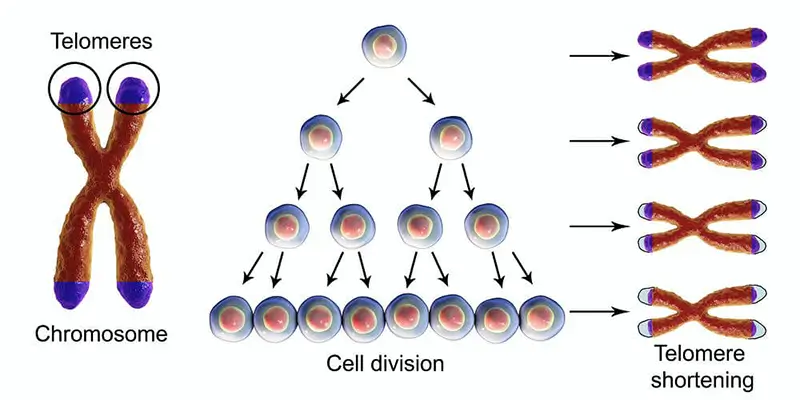
Summary:
Astaxanthin’s potent antioxidant properties, ability to boost autophagy, and DNA protection make it a promising tool for life extension, potentially slowing cellular aging and promoting healthy longevity.
Dosage.
Recommended dosages range from 4mg to 12mg a day depending on the desired effect. 8 mg astaxanthin per day is equivalent to a consumption of 1.6 kg of fresh salmon. We would never be able to consume this amount naturally. This also implies that this would be a wild-caught salmon.
Because fish in farms only consume the feed, they lack astaxanthin. For instance, pink flamingos are born white. In farming conditions, fish are fed with special forms of die since they don’t naturally consume the large range of phytochemicals found in the ocean. Salmon from industrial farms only contains dye or the meat would be completely colorless whit is proven by research as not desirable by consumers. Dye is synthetically produced astaxanthin that is used as a colorant. Synthetic astaxanthin made in laboratories from petrochemicals has not been approved for human consumption but you will be consuming it through salmon. It also comes in a variety of hues, from Roche’s carophyll pink to BASF’s lucantin pink. Because consumers won’t buy salmon if it is not a in nice natural pink color these dyes are used as a scam. They provide no dietary function. Their sole objective is to deceive you, the customer, into believing the product is tasty, nutritious, and natural-looking.
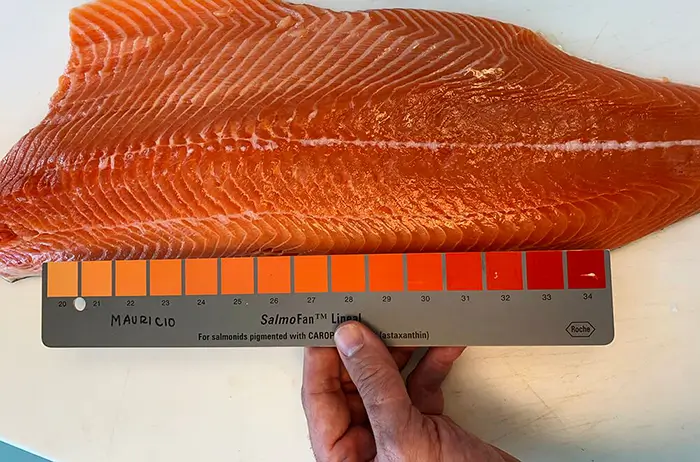
If we look at the dosages that are used in most of the studies they are lower than what most people would consume. A study specifically designed to investigate the safety of astaxanthin (Spiller et al., 2003) concluded that 6 mg of astaxanthin per can be safely consumed by healthy adults. A daily consumption of just 4 mg of astaxanthin provided significant protection of the skin against the effects of UV radiation. This is because it would accumulate in the skin in time even with that low dosage. What would happen if you go to 100 mg I don’t know. A dosage of 6 mg per day showed an improvement in skin elasticity, wrinkles, dry skin, age spots, and eyes. For more serious health issues like chronic pain, neuroprotection, and immunomodulation higher dosages would be necessary.
Major athletes use minimum doses of 16 mg per day. This is a bare minimum for them on daily bases and in some cases, dosages go up high as 200 mg before an event. The half-life of astaxanthin in the plasma is approximately 16 h after oral administration. But they also abuse steroids and other substances so they are not a representative sample for the rest of the population.
Among the scientific publications reporting the efficacy of astaxanthin, some have been conducted with high doses: from 40 mg to 100 mg per day. A dose of 40 mg per day is shown to be effective in improving gastric reflux syndrome, particularly in people infected with Helicobacter pylori. However, keep in mind that astaxanthin is like all other carotenoids, a fat-soluble molecule that accumulates. There will be probably some threshold of how much our body can accumulate and the lower the dosage the longer it will take. In most cases, people just take one 12mg pill a day a never see any signs of carotenemia. This is a dosage that I take.
If you see signs of carotenemia only way to reverse it is to lower the dosage.
In wild salmon, astaxanthin tissue concentration can go as high as 40mg/kg. For 80kg human that will translate into 3200mg. If you take 12mg a day that means you will go to this level of wild salmon concentration in 267 days if your body doesn’t utilize any of the ingested astaxanthin and that is not the case. More realistically it would be hard to reach full body saturation with a 12mg dose. It is more of a maintenance dose if you are not a smoker, and have a whole-food, plant-based antioxidant-rich diet. What I recommend is to start with a loading phase of 3 months of 40mg/day and then see how you feel. This would be a total of 3600mg and then you can transition to the maintenance phase. Another way is to go as long as you don’t see visible signs of carotenemia before lowering the dose. This would be an individual approach that might be the most optimal one. Also, there are synthetic and natural astaxanthin.
Synthetic astaxanthin is used as a food additive for farmed salmon. It is used as a tissue die to give a farmed salmon a natural-looking pink color of the meat. Synthetic astaxanthin from petrochemicals and astaxanthin derived from genetically mutated phaffia yeast has never been proven beneficial and have not been proven safe for direct human consumption. One more thing to keep in mind. Because astaxanthin, beta carotene, and other carotenoids are oil-soluble the absorption is greatly increased if we consume them with food or oil (Okada et al., 2009).
Summary:
While astaxanthin offers potent health benefits, its dosage varies based on desired outcomes. Stick to 40mg/day for 3 months for initial saturation, then lower to 12mg for maintenance, ensuring natural astaxanthin from supplements and consuming it with food for optimal absorption. Farmed salmon lacks astaxanthin and relies on deceptive dyes, making supplements a reliable source.
Side Effects:
- Increased skin pigmentation
- Altered hormone levels
- Changes in sex drive
- Possibility of decreased blood pressure in megadosing
- Red stool color
- Increased bowel movements
- Research is limited on the safety of astaxanthin supplements in women who are pregnant or breastfeeding
Conclusion:
- There are only a few supplemental antioxidants that are proven to be effective and safe like liposomal vitamin C, curcumin, or astaxanthin.
- Astaxanthin is the most powerful natural antioxidant, 6000 times more potent than vitamin C.
- Astaxanthin is produced by a special type of microscopic algae that we would never be able to consume in higher amounts in our normal diet.
- These types of algae use astaxanthin as a defensive mechanism to combat UV radiation when they get exposed to heavy sun radiation or when any other environmental stressor is present.
- These types of microscopic algae produce astaxanthin as a monotherapy defense against DNA damage without any other phytochemical synergies.
- So far there are more than 3000 studies done on it both in vitro and in vivo.
- Astaxanthin is a universal antioxidant (both oil and water-soluble).
- It can never turn itself into a pro-oxidant.
- There are three main enzymes that our body produces to fight free radicals and both three were significantly upregulated in the presence of astaxanthin.
- As an oil-soluble catenoid, it will accumulate in tissues.
- Astaxanthin protects the redox state and functional integrity of mitochondria.
- Unlike many other antioxidants, astaxanthin crosses the blood-brain barrier and accumulates in the brain. Only two of the 20 or so dietary carotenoids, lutein, and zeaxanthin, are typically found in the retina.
- Besides anti-apoptotic, anti-inflammatory, and antioxidant effects, it showed the potential to promote or maintain neural plasticity and to increase the rate of neurogenesis.
- Astaxanthin is also found to slow down age-related macular degeneration and glaucoma.
- It also has cancer-fighting effects.
- Protects the cholesterol from oxidizing and improves its profile, and protects cardiovascular health this includes stroke prevention as well.
- Boosts the immune system.
- Helps with infertility.
- Helps with diabetes.
- Helps with wounds, burns, ulcers, and sores.
- Protects against influenza and bacterial inflammation.
- Helps with autoimmune diseases and other inflammatory diseases.
- Helps with inflammation in the liver, overall liver functioning, and non-alcoholic fatty liver disease
- Helps alleviate menopausal symptoms.
- Help reduce pain symptoms in chronic and acute diseases like rheumatoid arthritis.
- It prolongs longevity by protecting DNA from damage and by increasing and regulating autophagy.
- Recommended or approved doses vary in different countries and range between 2 and 24 mg.
- Supplemental antioxidants are not a substitute for a bad diet with a nonexisting ORAC score even if it is whole food plant-based diet, learn your ORAC values.
FAQ
References:
Passages selected from a book: Pokimica, Milos. Go Vegan? Review of Science Part 3. Kindle ed., Amazon, 2020.
- Nishida, Yasuhiro & Yamashita, E. & Miki, Wataru. (2007). Quenching activities of common hydrophilic and lipophilic antioxidants against singlet oxygen using chemiluminescence detection system. 11. 16-20. http://dx.doi.org/10.11501/10996240
- Craft, N. E., Haitema, T. B., Garnett, K. M., Fitch, K. A., & Dorey, C. K. (2004). Carotenoid, tocopherol, and retinol concentrations in elderly human brain. The journal of nutrition, health & aging, 8(3), 156–162. [PubMed]
- Higuera-Ciapara, I., Félix-Valenzuela, L., & Goycoolea, F. M. (2006). Astaxanthin: a review of its chemistry and applications. Critical reviews in food science and nutrition, 46(2), 185–196. https://doi.org/10.1080/10408690590957188
- Xue, X. L., Han, X. D., Li, Y., Chu, X. F., Miao, W. M., Zhang, J. L., & Fan, S. J. (2017). Astaxanthin attenuates total body irradiation-induced hematopoietic system injury in mice via inhibition of oxidative stress and apoptosis. Stem cell research & therapy, 8(1), 7. https://doi.org/10.1186/s13287-016-0464-3
- Angwafor, F., 3rd, & Anderson, M. L. (2008). An open label, dose response study to determine the effect of a dietary supplement on dihydrotestosterone, testosterone and estradiol levels in healthy males. Journal of the International Society of Sports Nutrition, 5, 12. https://doi.org/10.1186/1550-2783-5-12
- Kammeyer, A., & Luiten, R. M. (2015). Oxidation events and skin aging. Ageing research reviews, 21, 16–29. https://doi.org/10.1016/j.arr.2015.01.001
- Komatsu, T., Sasaki, S., Manabe, Y., Hirata, T., & Sugawara, T. (2017). Preventive effect of dietary astaxanthin on UVA-induced skin photoaging in hairless mice. PloS one, 12(2), e0171178. https://doi.org/10.1371/journal.pone.0171178
- Rao, A. R., Sindhuja, H. N., Dharmesh, S. M., Sankar, K. U., Sarada, R., & Ravishankar, G. A. (2013). Effective inhibition of skin cancer, tyrosinase, and antioxidative properties by astaxanthin and astaxanthin esters from the green alga Haematococcus pluvialis. Journal of agricultural and food chemistry, 61(16), 3842–3851. https://doi.org/10.1021/jf304609j
- Tominaga, K., Hongo, N., Karato, M., & Yamashita, E. (2012). Cosmetic benefits of astaxanthin on humans subjects. Acta biochimica Polonica, 59(1), 43–47..[PubMed]
- Darvin, M. E., Sterry, W., Lademann, J., & Patzelt, A. (2013). Alcohol consumption decreases the protection efficiency of the antioxidant network and increases the risk of sunburn in human skin. Skin pharmacology and physiology, 26(1), 45–51. https://doi.org/10.1159/000343908
- Feeney, J., Finucane, C., Savva, G. M., Cronin, H., Beatty, S., Nolan, J. M., & Kenny, R. A. (2013). Low macular pigment optical density is associated with lower cognitive performance in a large, population-based sample of older adults. Neurobiology of aging, 34(11), 2449–2456. https://doi.org/10.1016/j.neurobiolaging.2013.05.007
- Buscemi, S., Corleo, D., Pace, F. D., Petroni, M. L., Satriano, A., & Marchesini, G. (2018). The Effect of Lutein on Eye and Extra-Eye Health. Nutrients, 10(9). https://doi.org/10.3390/nu10091321
- Satia, J. A., Littman, A., Slatore, C. G., Galanko, J. A., & White, E. (2009). Long-term use of beta-carotene, retinol, lycopene, and lutein supplements and lung cancer risk: results from the VITamins And Lifestyle (VITAL) study. American journal of epidemiology, 169(7), 815–828. https://doi.org/10.1093/aje/kwn409
- Grimmig, B., Kim, H., Nash, K., Bickford, P. C., & Shytle, R. D. (2017). Neuroprotective mechanisms of astaxanthin: A potential therapeutic role in preserving cognitive function in age and neurodegeneration. GeroScience, 39(1), 19-32. https://doi.org/10.1007/s11357-017-9958-x
- Kim, S. H., & Kim, H. (2019). Astaxanthin Modulation of Signaling Pathways That Regulate Autophagy. Marine drugs, 17(10), 546. https://doi.org/10.3390/md17100546
- Brown, D. R., Gough, L. A., Deb, S. K., Sparks, S. A., & McNaughton, L. R. (2017). Astaxanthin in Exercise Metabolism, Performance and Recovery: A Review. Frontiers in Nutrition, 4. https://doi.org/10.3389/fnut.2017.00076
- Spiller, G. A., & Dewell, A. (2003). Safety of an astaxanthin-rich Haematococcus pluvialis algal extract: a randomized clinical trial. Journal of medicinal food, 6(1), 51–56. https://doi.org/10.1089/109662003765184741
- Okada, Y., Ishikura, M., & Maoka, T. (2009). Bioavailability of astaxanthin in Haematococcus algal extract: the effects of timing of diet and smoking habits. Bioscience, biotechnology, and biochemistry, 73(9), 1928–1932. https://doi.org/10.1271/bbb.90078
- Anderson M. L. (2005). A preliminary investigation of the enzymatic inhibition of 5alpha-reduction and growth of prostatic carcinoma cell line LNCap-FGC by natural astaxanthin and Saw Palmetto lipid extract in vitro. Journal of herbal pharmacotherapy, 5(1), 17–26. [PubMed]
Related Posts
Do you have any questions about nutrition and health?
I would love to hear from you and answer them in my next post. I appreciate your input and opinion and I look forward to hearing from you soon. I also invite you to follow us on Facebook, Instagram, and Pinterest for more diet, nutrition, and health content. You can leave a comment there and connect with other health enthusiasts, share your tips and experiences, and get support and encouragement from our team and community.
I hope that this post was informative and enjoyable for you and that you are prepared to apply the insights you learned. If you found this post helpful, please share it with your friends and family who might also benefit from it. You never know who might need some guidance and support on their health journey.
– You Might Also Like –

Learn About Nutrition
Milos Pokimica is a doctor of natural medicine, clinical nutritionist, medical health and nutrition writer, and nutritional science advisor. Author of the book series Go Vegan? Review of Science, he also operates the natural health website GoVeganWay.com
Medical Disclaimer
GoVeganWay.com brings you reviews of the latest nutrition and health-related research. The information provided represents the personal opinion of the author and is not intended nor implied to be a substitute for professional medical advice, diagnosis, or treatment. The information provided is for informational purposes only and is not intended to serve as a substitute for the consultation, diagnosis, and/or medical treatment of a qualified physician or healthcare provider.NEVER DISREGARD PROFESSIONAL MEDICAL ADVICE OR DELAY SEEKING MEDICAL TREATMENT BECAUSE OF SOMETHING YOU HAVE READ ON OR ACCESSED THROUGH GoVeganWay.com
NEVER APPLY ANY LIFESTYLE CHANGES OR ANY CHANGES AT ALL AS A CONSEQUENCE OF SOMETHING YOU HAVE READ IN GoVeganWay.com BEFORE CONSULTING LICENCED MEDICAL PRACTITIONER.
In the event of a medical emergency, call a doctor or 911 immediately. GoVeganWay.com does not recommend or endorse any specific groups, organizations, tests, physicians, products, procedures, opinions, or other information that may be mentioned inside.
Editor Picks –
Milos Pokimica is a health and nutrition writer and nutritional science advisor. Author of the book series Go Vegan? Review of Science, he also operates the natural health website GoVeganWay.com
Latest Articles –
Top Health News — ScienceDaily
- This cancer-fighting molecule took 50 years to buildon December 22, 2025
MIT scientists have achieved the first-ever lab synthesis of verticillin A, a complex fungal compound discovered in 1970. Its delicate structure stalled chemists for decades, despite differing from related molecules by only two atoms. With the synthesis finally complete, researchers created new variants that showed strong activity against a rare pediatric brain cancer. The breakthrough could unlock an entire class of previously unreachable cancer-fighting molecules.
- A new drug could stop Alzheimer’s before memory loss beginson December 22, 2025
New research suggests Alzheimer’s may start far earlier than previously thought, driven by a hidden toxic protein in the brain. Scientists found that an experimental drug, NU-9, blocks this early damage in mice and reduces inflammation linked to disease progression. The treatment was given before symptoms appeared, targeting the disease at its earliest stage. Researchers say this approach could reshape how Alzheimer’s is prevented and treated.
- Why one long walk may be better than many short oneson December 22, 2025
How you walk may matter just as much as how much you walk. A large UK study tracking more than 33,000 low-activity adults found that people who grouped their daily steps into longer, uninterrupted walks had dramatically lower risks of early death and heart disease than those who moved in short, scattered bursts.
- Parkinson’s breakthrough changes what we know about dopamineon December 22, 2025
A new study shows dopamine isn’t the brain’s movement “gas pedal” after all. Instead of setting speed or strength, it quietly enables movement in the background, much like oil in an engine. When scientists manipulated dopamine during movement, nothing changed—but restoring baseline dopamine levels made a big difference. The finding could reshape how Parkinson’s disease is treated.
- A traditional Brazilian plant shows unexpected strength against arthritison December 22, 2025
A Brazilian study has confirmed that Joseph’s Coat, a plant used for generations in folk medicine, can significantly reduce inflammation and arthritis symptoms in lab tests. Researchers observed less swelling, healthier joints, and signs of tissue protection. Just as important, the extract showed a promising safety profile at tested doses. The discovery could pave the way for new plant-based anti-inflammatory treatments.
- Study links full-fat cheese to lower dementia riskon December 22, 2025
Eating full-fat cheese and cream may be associated with a lower risk of dementia, according to a large study that tracked people for more than 25 years. Those who consumed higher amounts of these foods developed dementia less often than those who ate little or none. Interestingly, low-fat dairy products did not show the same pattern. Researchers caution that the findings show an association, not cause and effect.
- Science says we’ve been nurturing “gifted” kids all wrongon December 21, 2025
A major international review has upended long-held ideas about how top performers are made. By analyzing nearly 35,000 elite achievers across science, music, chess, and sports, researchers found that early stars rarely become adult superstars. Most world-class performers developed slowly and explored multiple fields before specializing. The message is clear: talent grows through variety, not narrow focus.
PubMed, #vegan-diet –
- Comparing diet-related attitudes, perceptions, and behaviors of vegan and omnivorous adults: results from a cross-sectional survey study in Germanyon December 22, 2025
CONCLUSION: The findings are consistent with and build on existing research on cognitive and behavioral patterns related to a vegan diet, while at the same time yielding some additional insights. In particular, the results on significant differences in the risk-benefit perception of a vegan diet, as well as on motivations and influences regarding the decision to follow a vegan diet provide an important basis for the development of public health interventions and a foundation for further […]
- Assessment of vitamin A, vitamin B2, vitamin B12, vitamin K, folate, and choline status following 4 months of multinutrient supplementation in healthy vegans: a randomised,…on December 19, 2025
CONCLUSION: A multinutrient supplement containing 82 µg of vitamin B(12) per day significantly positively affected vitamin B(12) blood biomarkers in healthy vegans.
- Exploring the synergistic potential of pH and ultrasonication on the functional properties of pea and lentil protein isolates and its formulation in food producton December 15, 2025
The substitution of meat proteins with plant-based proteins from various sources is often motivated by nutritional considerations. However, the inherent limited solubility of plant proteins, which results in suboptimal techno-functional properties, remains a persistent challenge in food formulation. The purpose of this study was to utilize unique properties of pea (Pisum sativum L.) and lentil (Lens culinaris) through ultrasonication and pH variation in order to develop a stable and […]
- Healthful and Unhealthful Plant-Based Diets and Their Association with Cardiometabolic Targets in Women Diagnosed with Breast Cancer: A Cross-Sectional Analysis of a Lifestyle Trialon December 11, 2025
CONCLUSIONS: Maintaining cardiometabolic risk factors within normal ranges is clinically relevant in BCS, and this may be more likely when a plant-based diet is consumed, especially if low in unhealthy plant foods.
- Functional and Nutritional Properties of Lion’s Mane Mushrooms in Oat-Based Desserts for Dysphagia and Healthy Ageingon December 11, 2025
Hericium erinaceus (Lion’s Mane mushroom) is a medicinal species recognised for its neuroprotective and antioxidant properties. This study investigated its potential as a functional ingredient in oat milk-based desserts formulated for individuals with dysphagia. Freeze-dried Lion’s Mane powder (LMP), containing high-quality protein (~16%, amino acid score 88%), dietary fibre (~31%), and phenolic compounds (72.15 mg GAE/g), was incorporated at varying levels using gelatin or iota-carrageenan […]
Random Posts –
Featured Posts –
Latest from PubMed, #plant-based diet –
- Associations Between Healthy and Plant-Based Dietary Patterns and Cognitive Reserve: A Cross-Sectional Analysis of the 1946 British Birth Cohortby Kelly C Cara on December 23, 2025
CONCLUSIONS: CR was positively associated with healthy dietary patterns and inversely associated with unhealthful plant-based dietary patterns. Diet uniquely explained variations in CR and should be considered among influential lifestyle factors in future research. Longitudinal analyses are needed to confirm these findings.
- Dietary quercetagetin attenuates H2O2-induced oxidative damage and preserves meat quality in broilers by modulating redox status and Nrf2/ferroptosis signaling pathwayby Wenyue Hu on December 22, 2025
In modern poultry production, oxidative stress has emerged as a pivotal factor compromising the health status and overall performance of broiler. The aim of this study was to investigate the effects of dietary quercetagetin (QG) supplementation on hydrogen peroxide (H(2)O(2))-induced oxidative damage in breast muscle of broilers, focusing on growth performance, meat quality, and antioxidant function, and elucidating the underlying mechanisms. Two hundred and forty one-day-old Cobb broilers […]
- Effects of dietary selenium supplementation on physiological parameters, tissue fatty acid composition, and fatty acid-metabolism relative gene expression of grouper (Epinephelus coioides) fed high…by Yen-Chun Lee on December 22, 2025
The present study evaluated the effects of dietary selenium (Se) supplementation on growth performance, physiological responses, tissue fatty acid profiles, and the expression of genes related to fatty acid metabolism in juvenile grouper (Epinephelus coioides). A control diet based on soy protein concentrate, replacing 40% of the fish meal protein, was supplemented with graded levels of Se at 0, 0.3, 0.6, and 1.0 mg Se kg^(-1). A fish meal-based reference diet was also included for […]
- Unravelling the interaction between feeding regimens and milking time in Parmigiano Reggiano PDO milk: an integrated metabolomics and ion mobility lipidomics approachby Pier Paolo Becchi on December 22, 2025
In this study, an integrated approach based on UHPLC-HRMS metabolomics and IM-HRMS lipidomics has been carried out to unravel the interaction between feeding and milking time in the overall chemical profile of Parmigiano Reggiano (PR) milk. Specifically, ANOVA multiblock OPLS (AMOPLS) modelling revealed the complementarity of the assays in combining the effect of these two critical parameters. In particular, metabolomics highlighted the presence of plant-derived compounds (mainly terpenoids […]
- Comparing diet-related attitudes, perceptions, and behaviors of vegan and omnivorous adults: results from a cross-sectional survey study in Germanyby Dan Borzekowski on December 22, 2025
CONCLUSION: The findings are consistent with and build on existing research on cognitive and behavioral patterns related to a vegan diet, while at the same time yielding some additional insights. In particular, the results on significant differences in the risk-benefit perception of a vegan diet, as well as on motivations and influences regarding the decision to follow a vegan diet provide an important basis for the development of public health interventions and a foundation for further […]
- The effect of dietary interventions on peripheral markers of inflammation among people with multiple sclerosis: A systematic review and meta-analysis of randomized controlled trialsby Wade R Pingel on December 21, 2025
CONCLUSIONS: Several dietary interventions may reduce systemic inflammation in PwMS, with greater effects in longer-duration interventions. Calorie-restricted diets did not significantly alter adipokines. Given the limited number and heterogeneity of studies, larger and longer RCTs using comparable dietary interventions are needed to confirm these findings.
